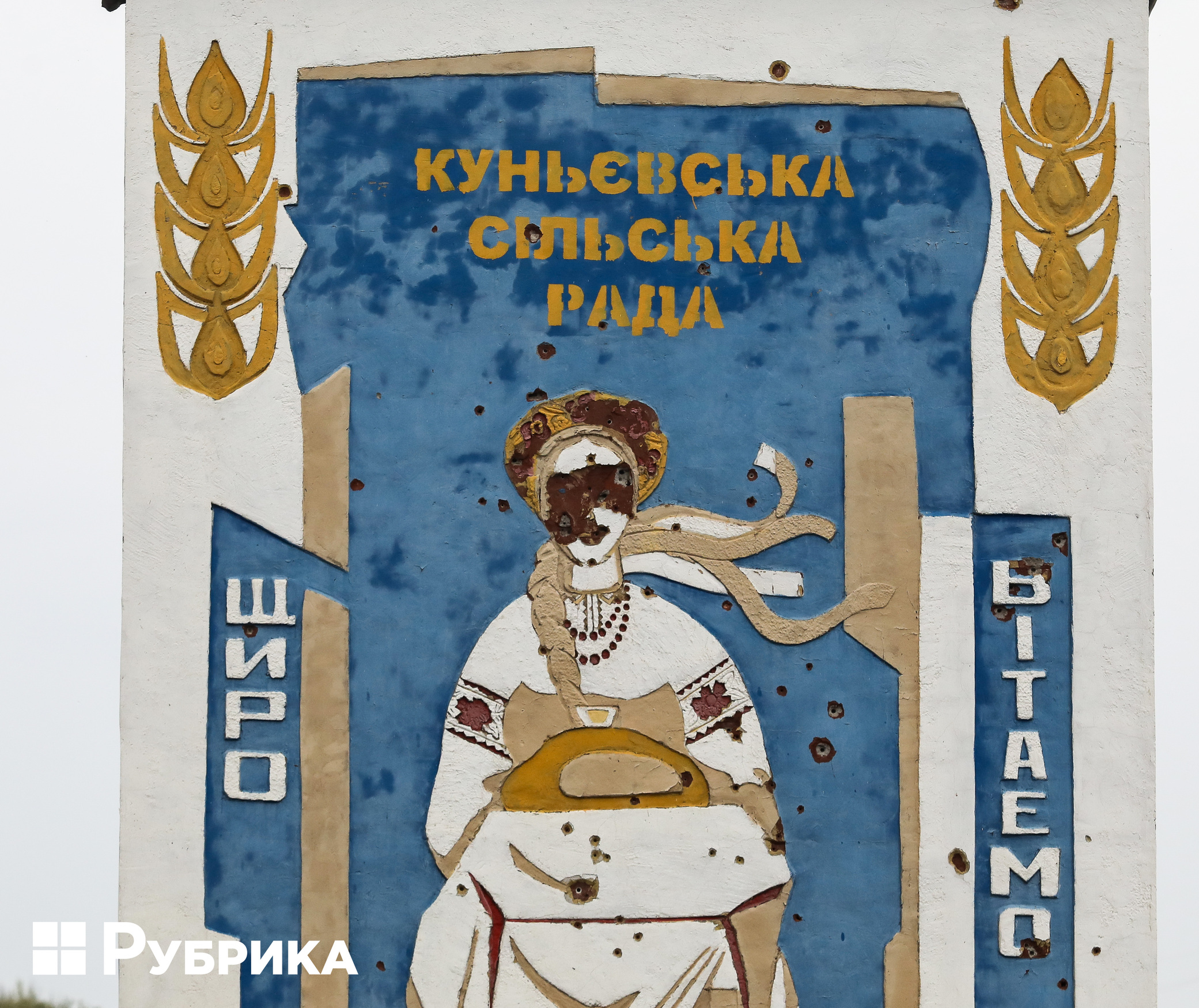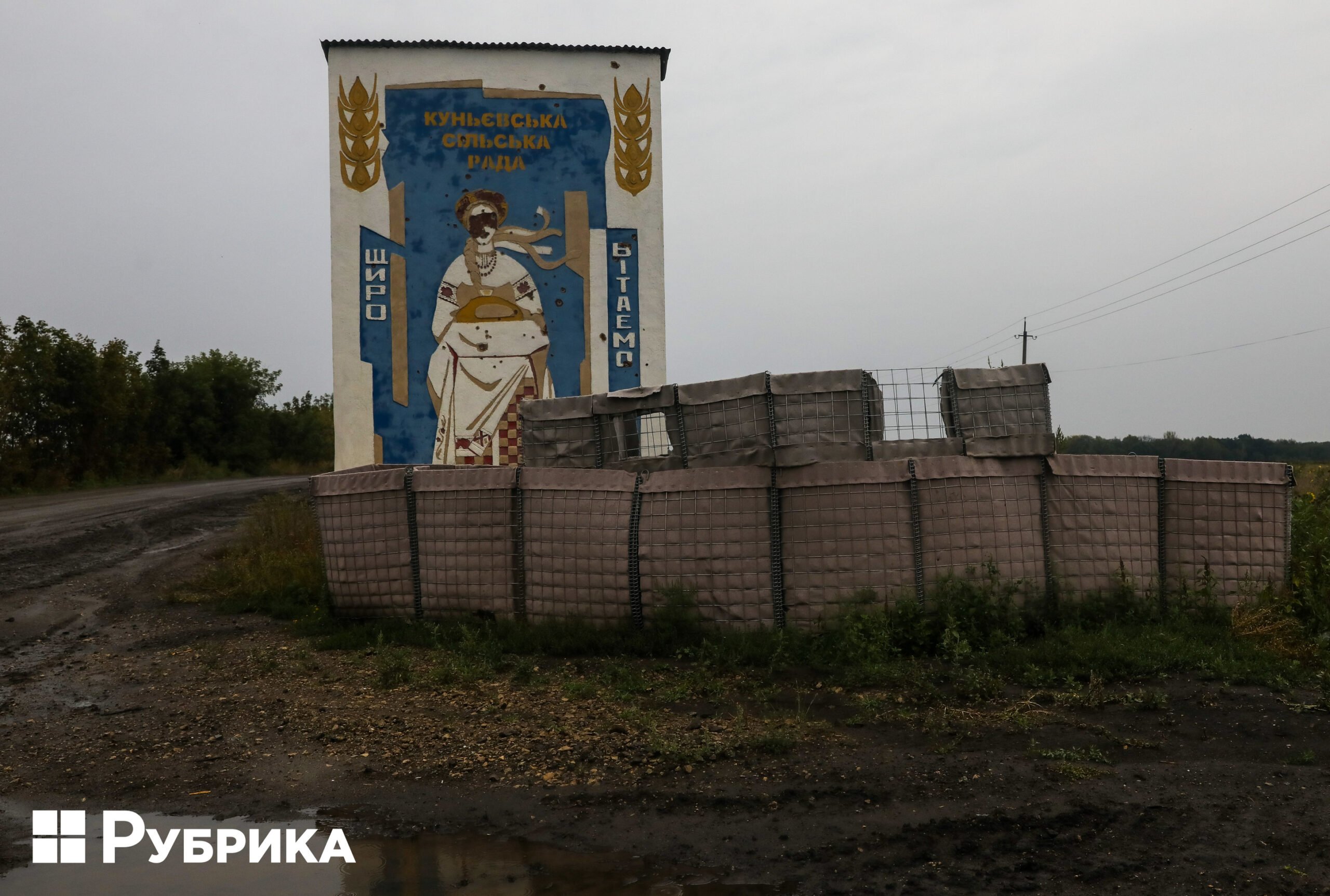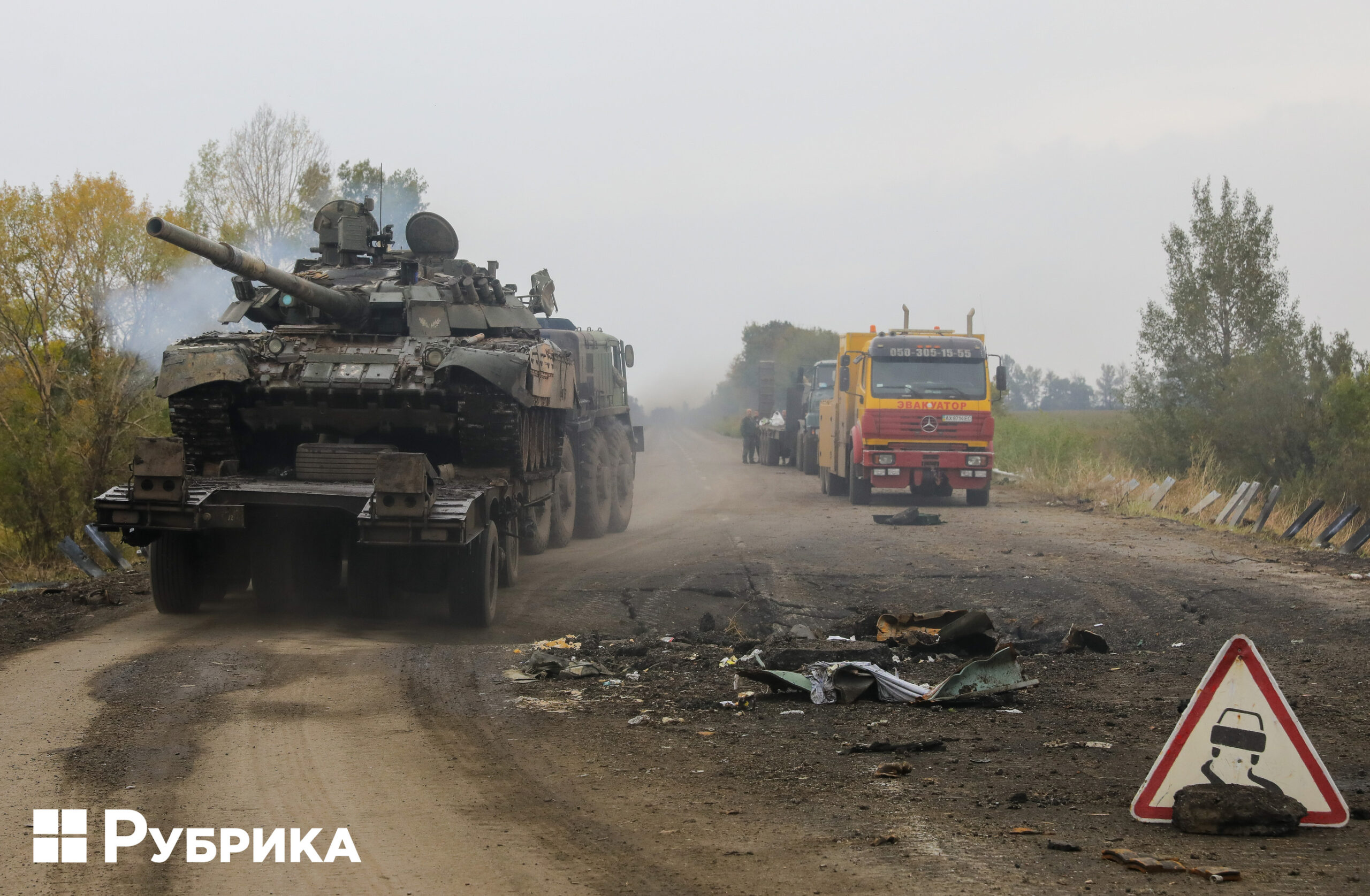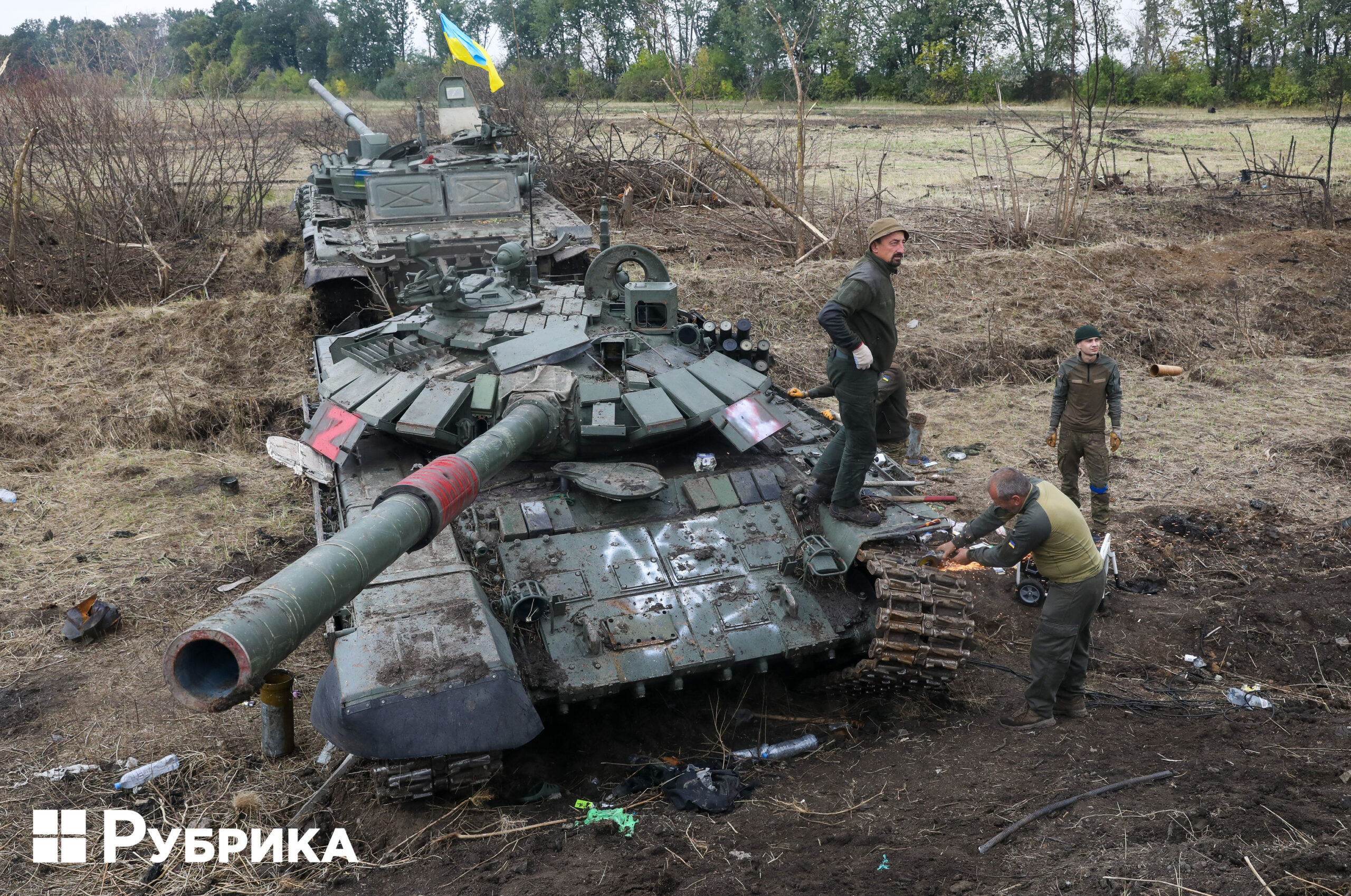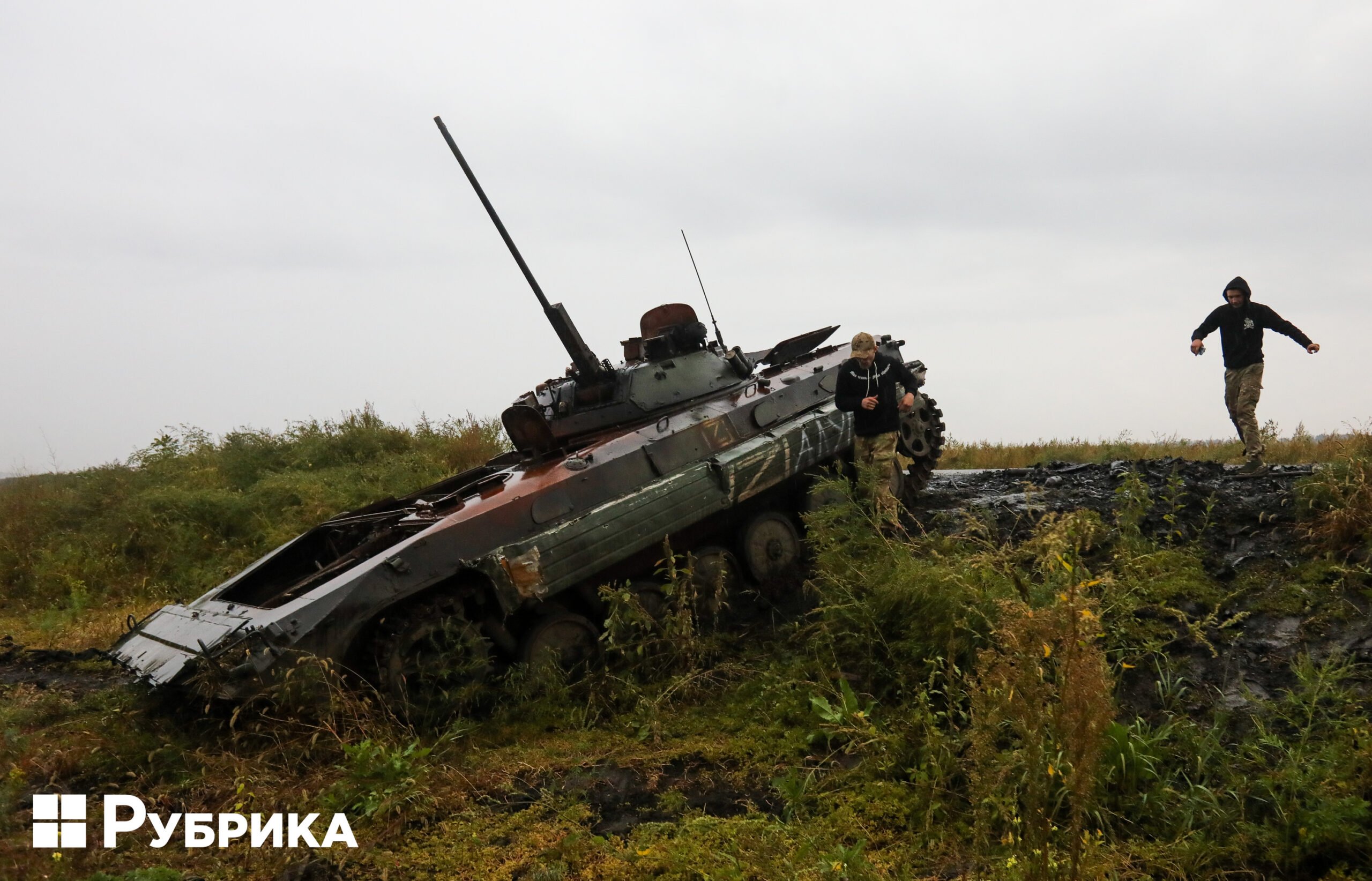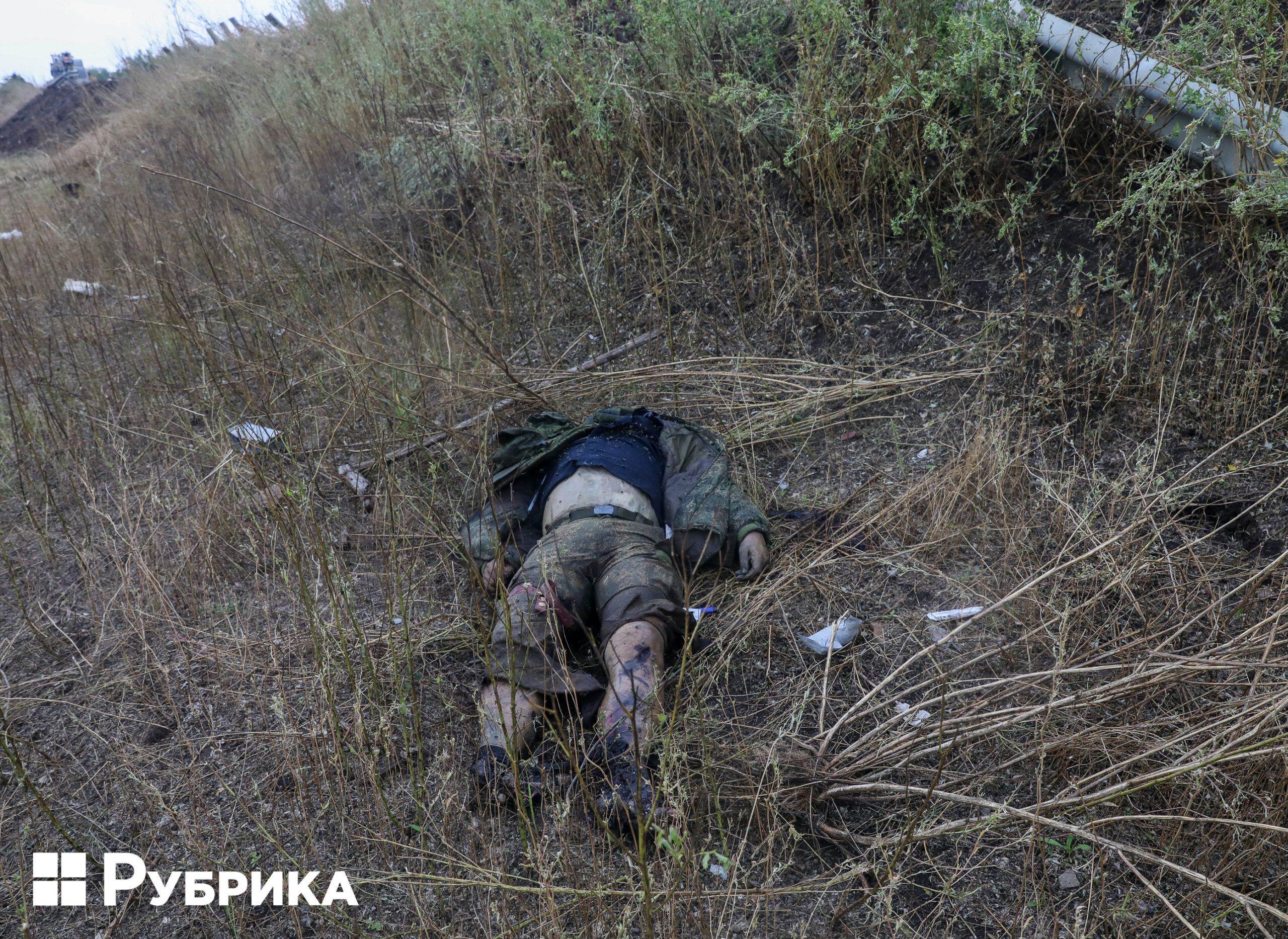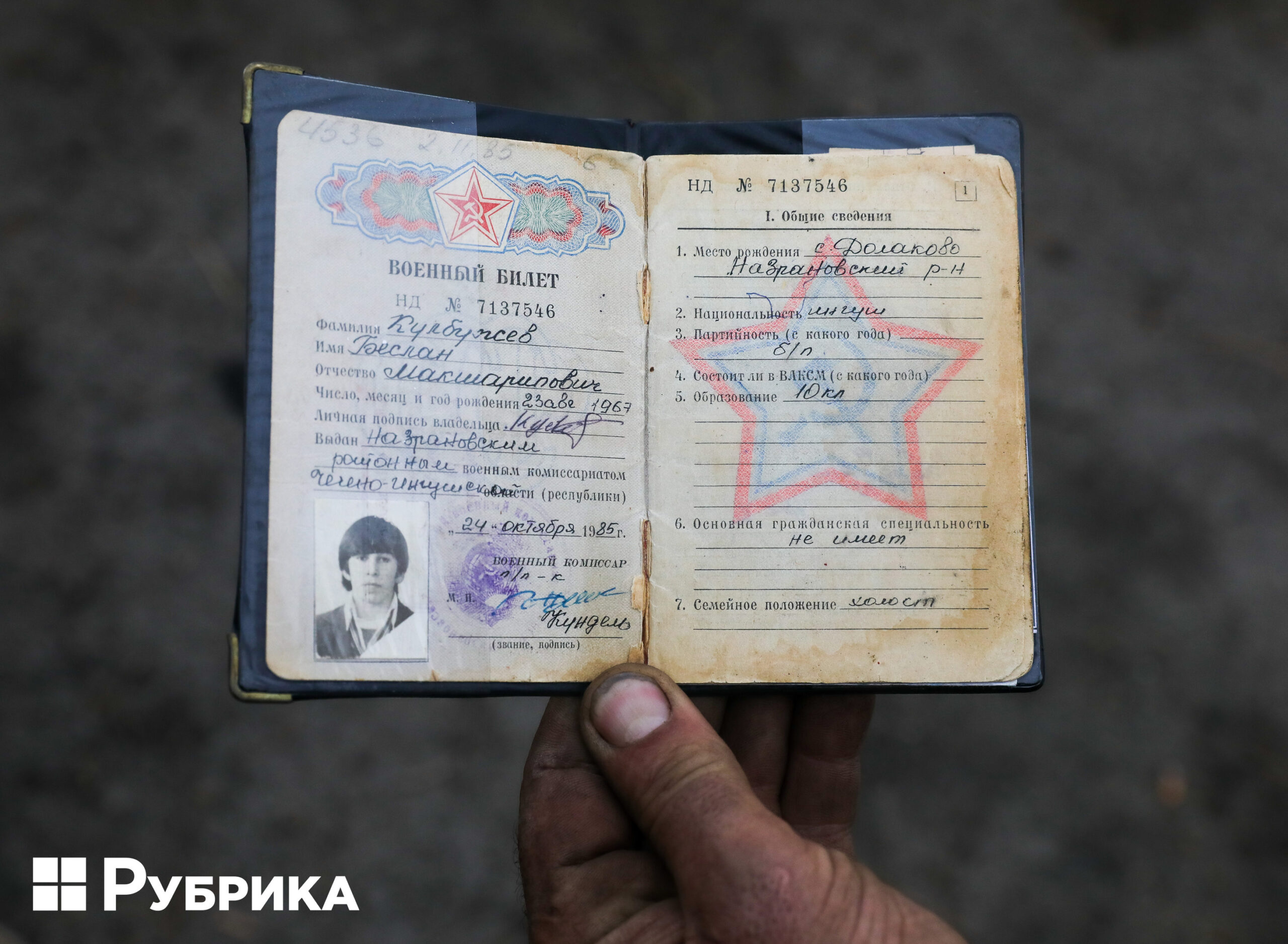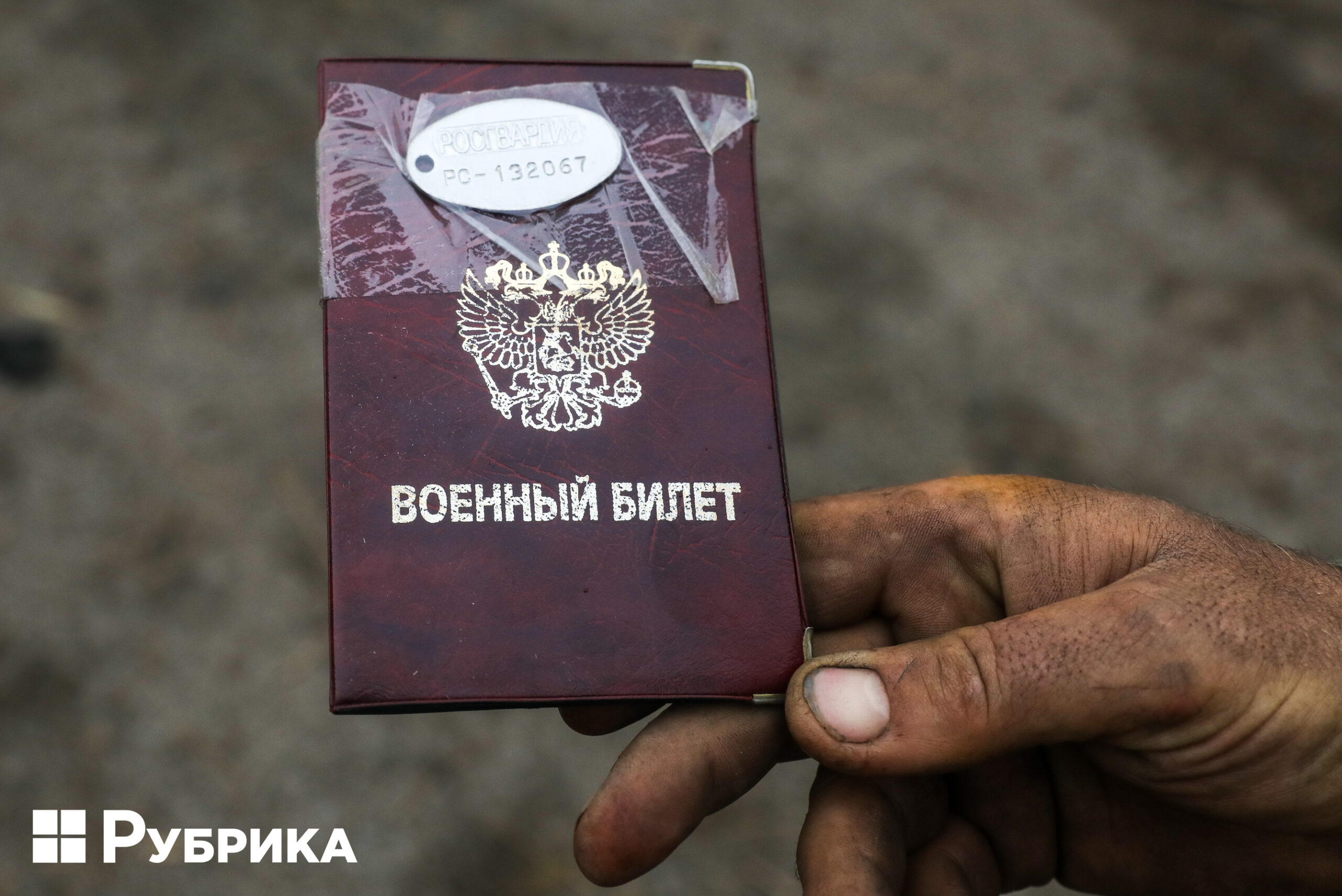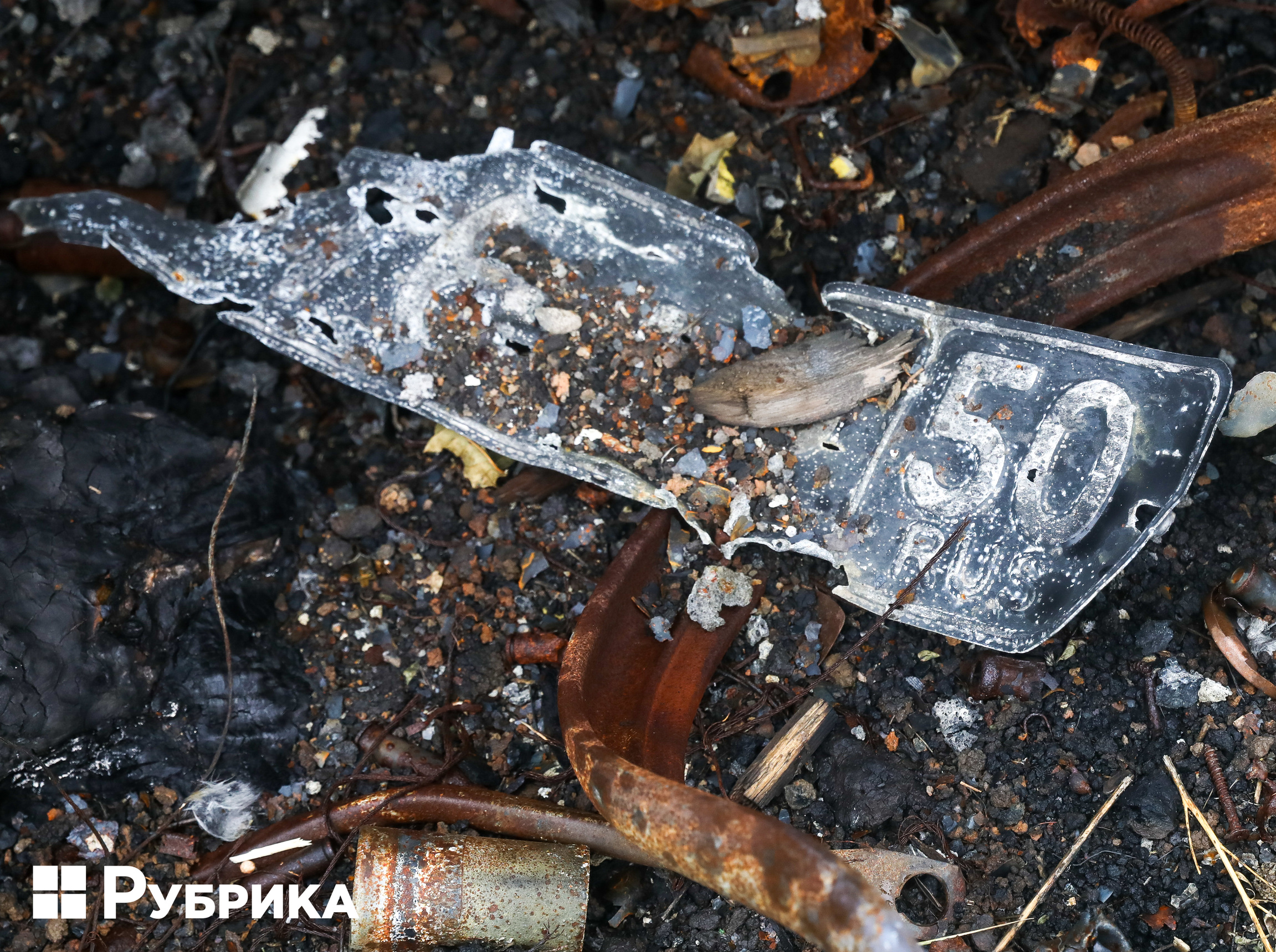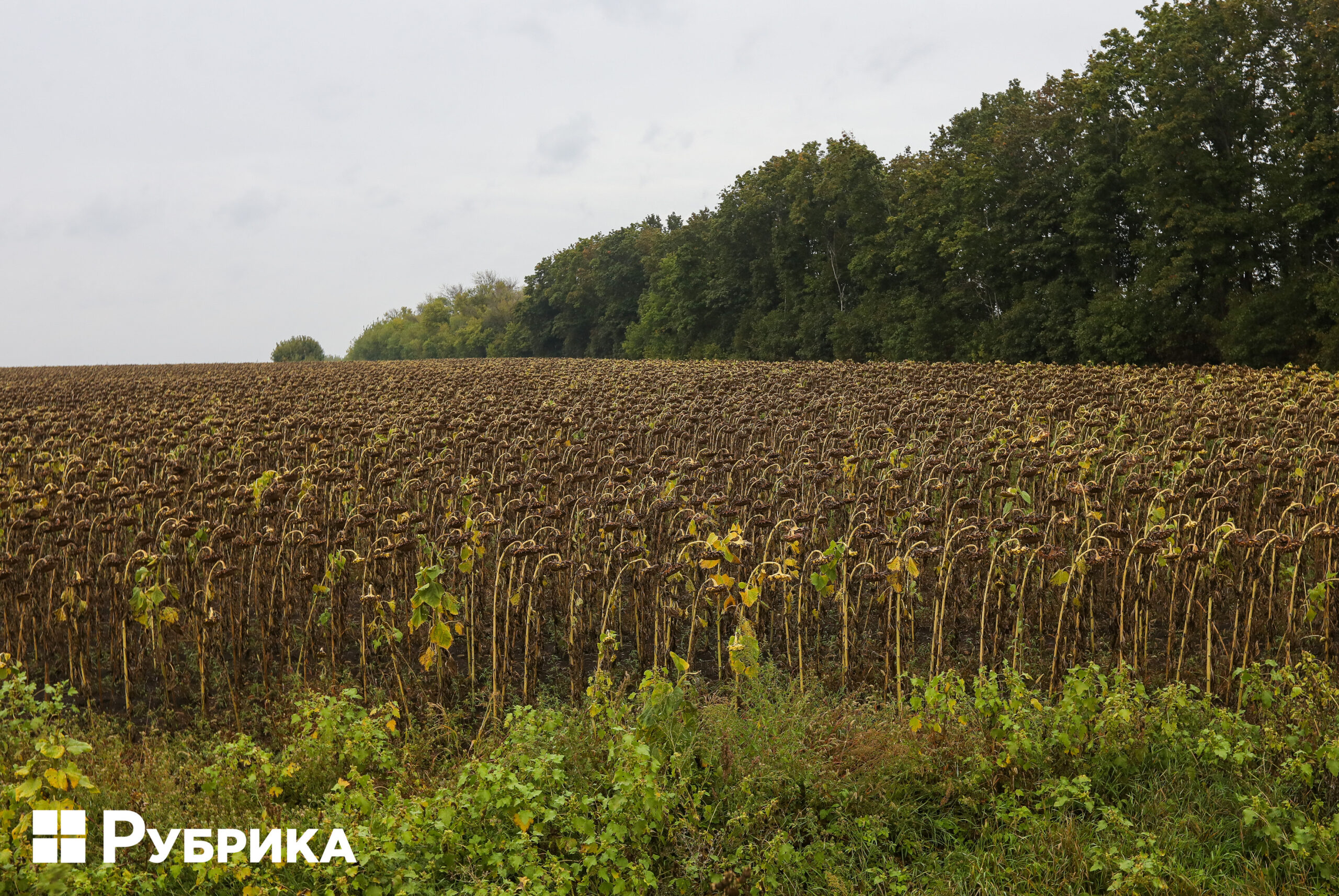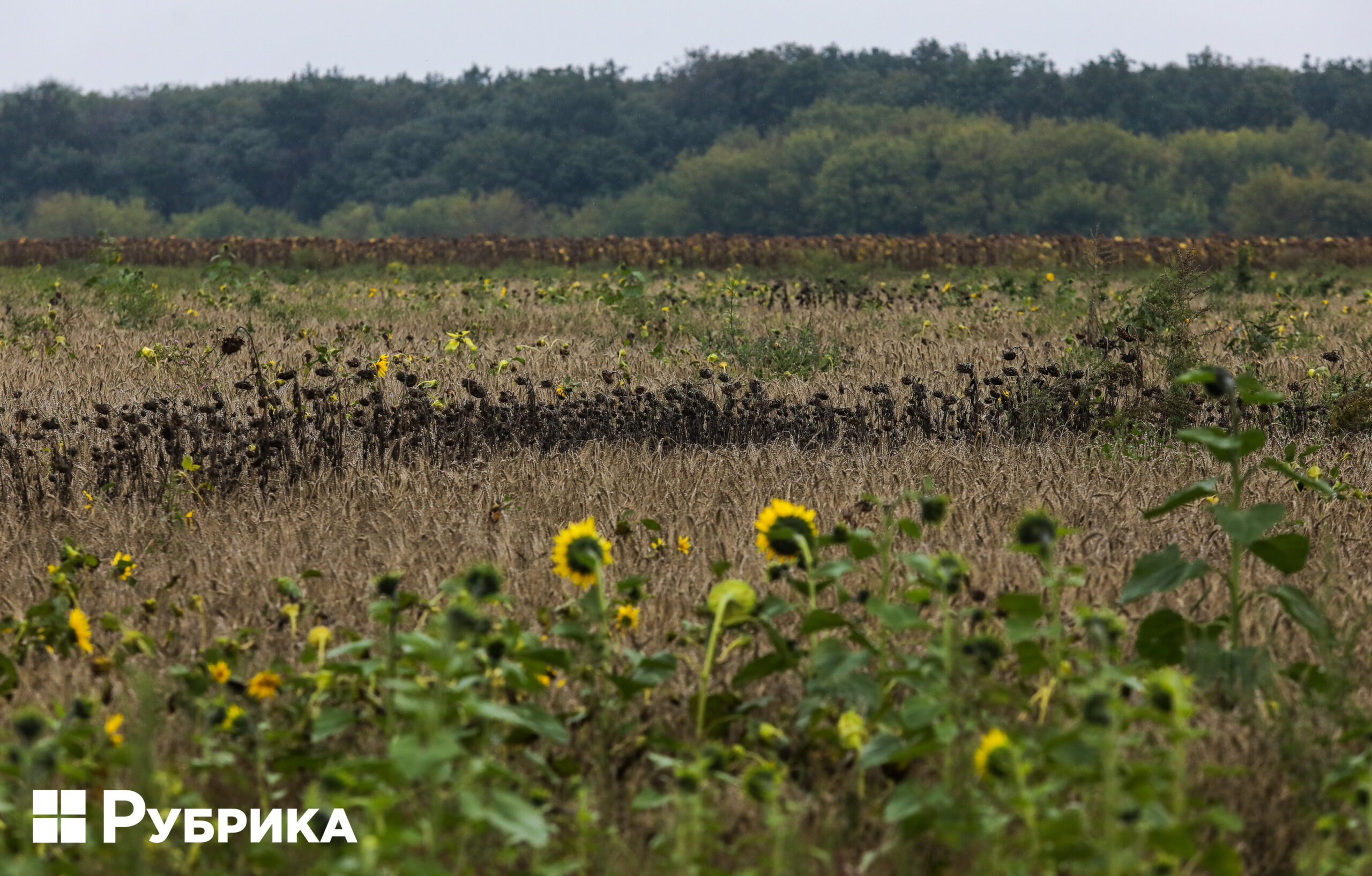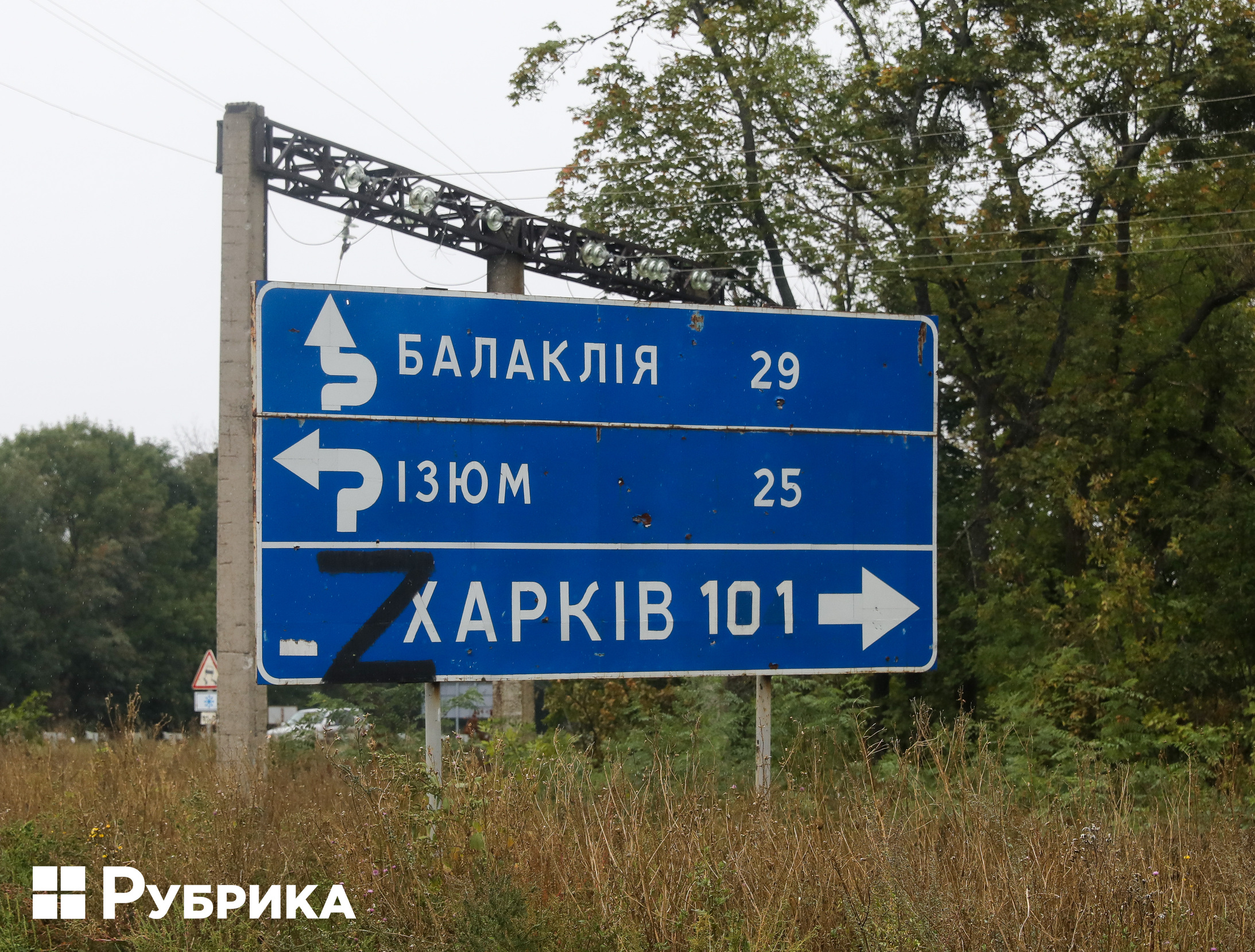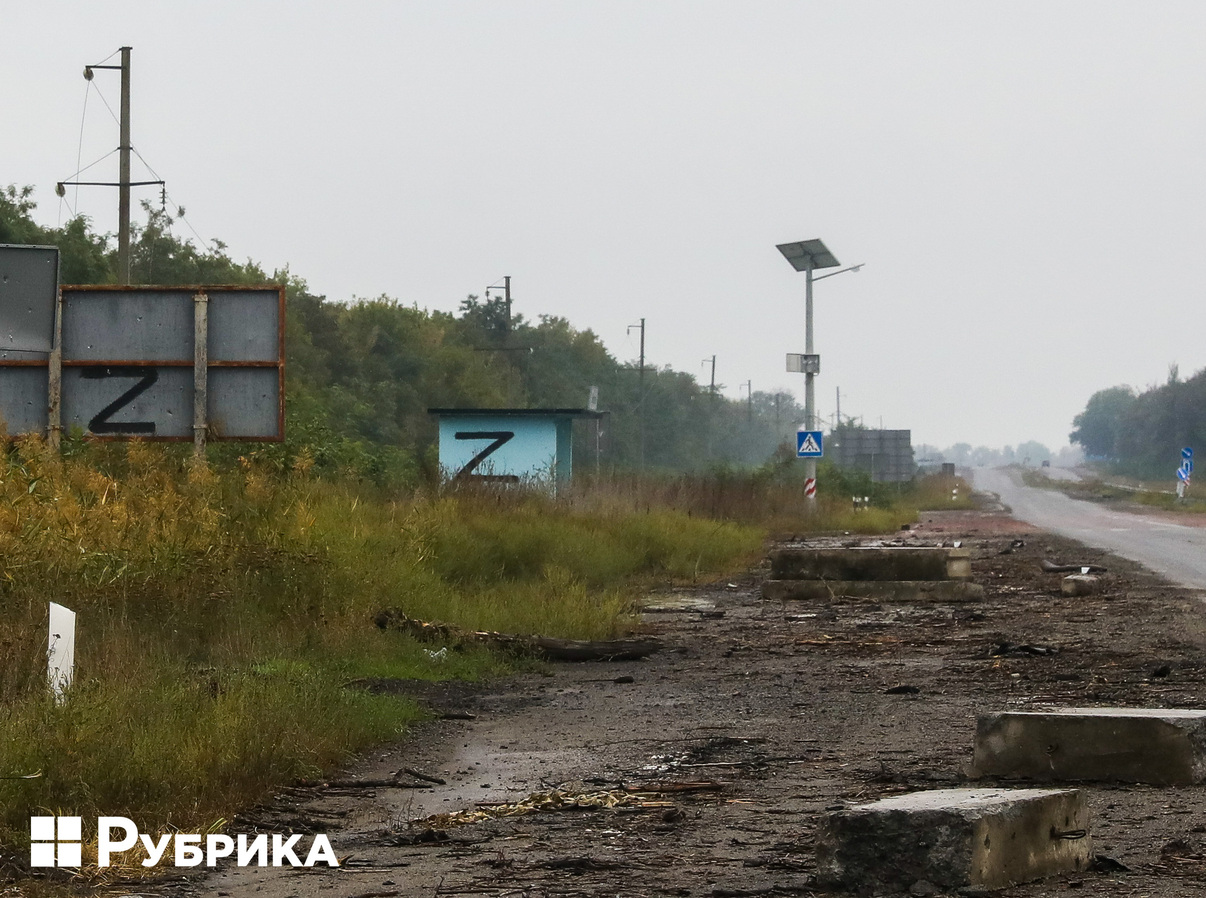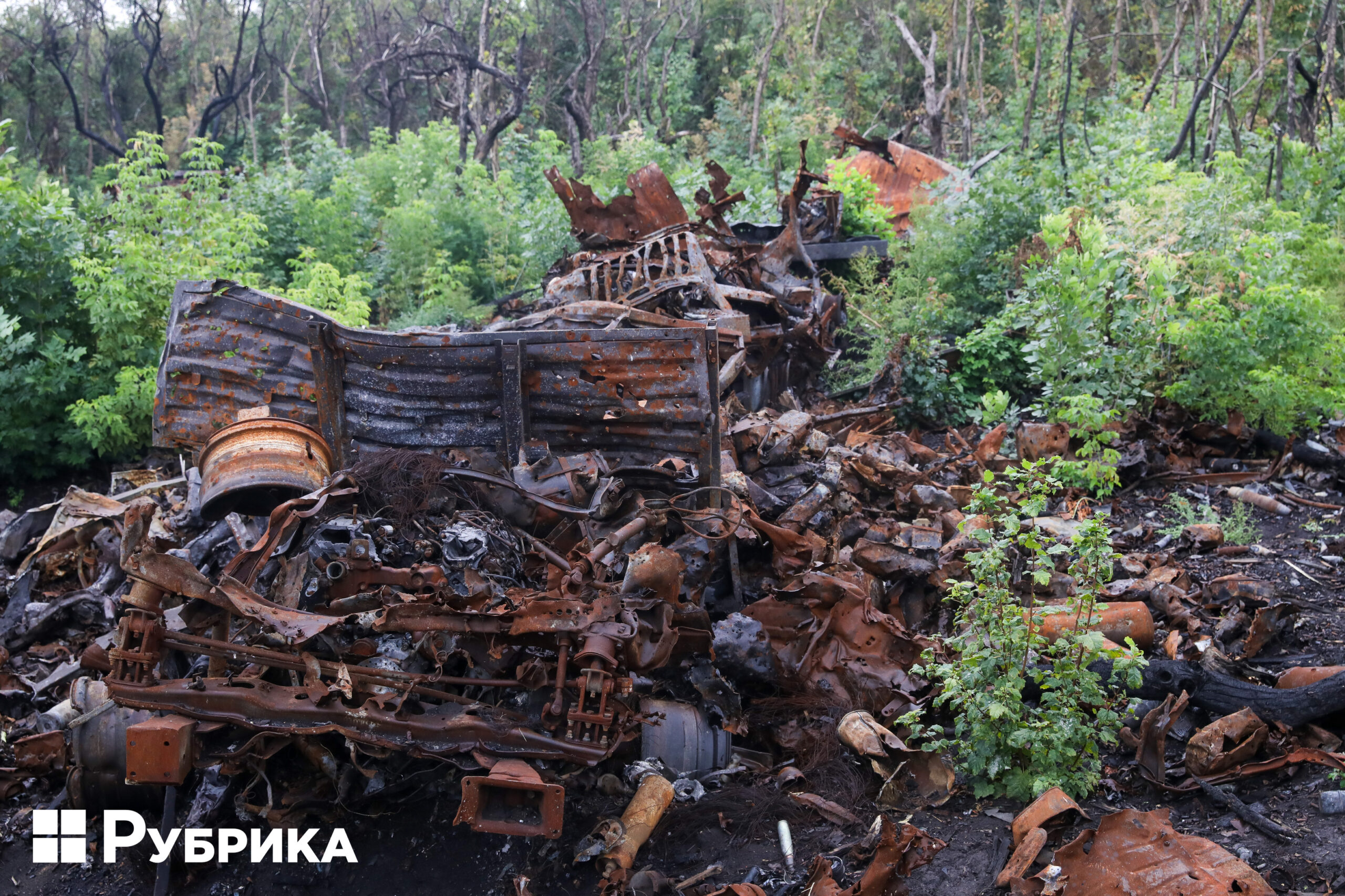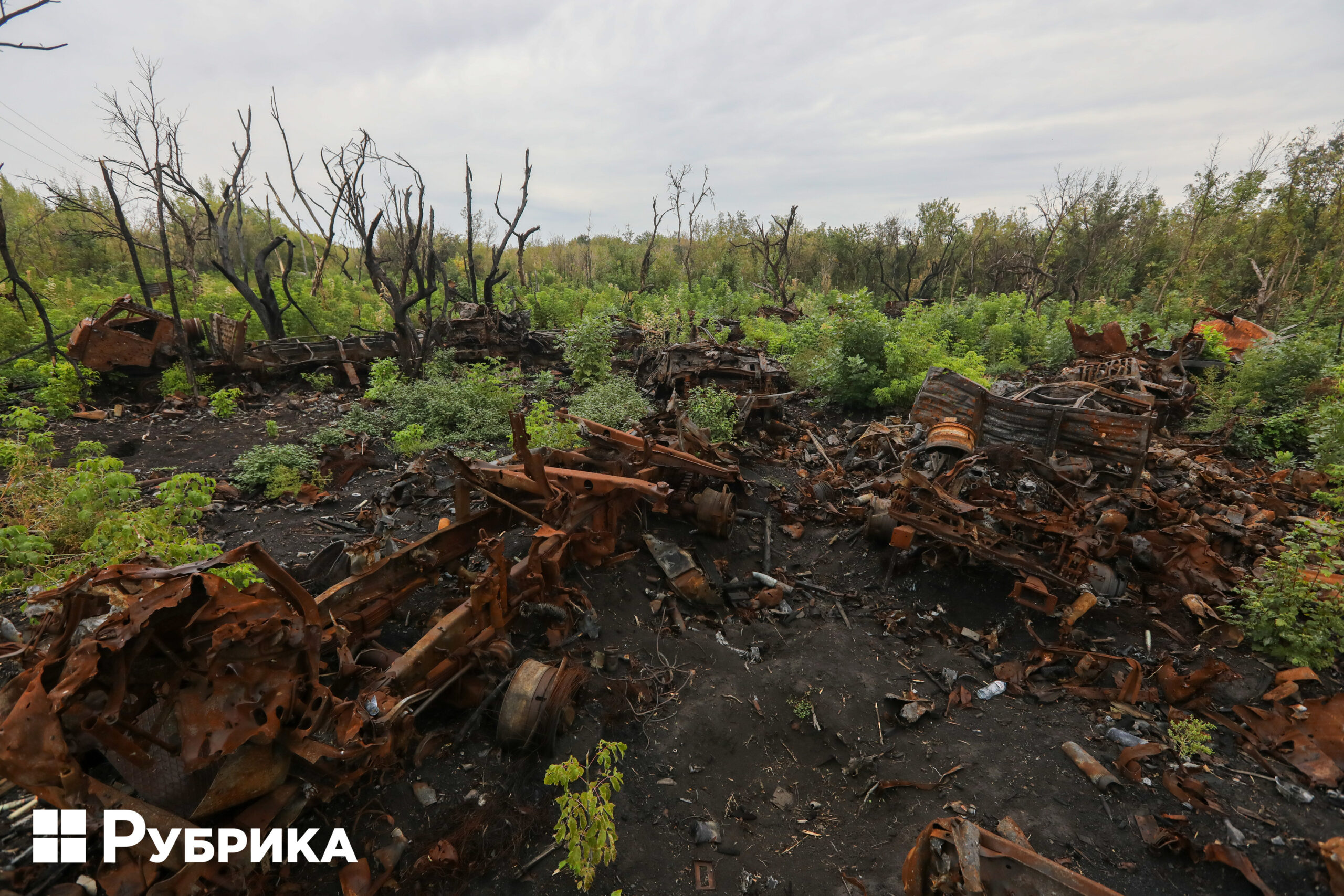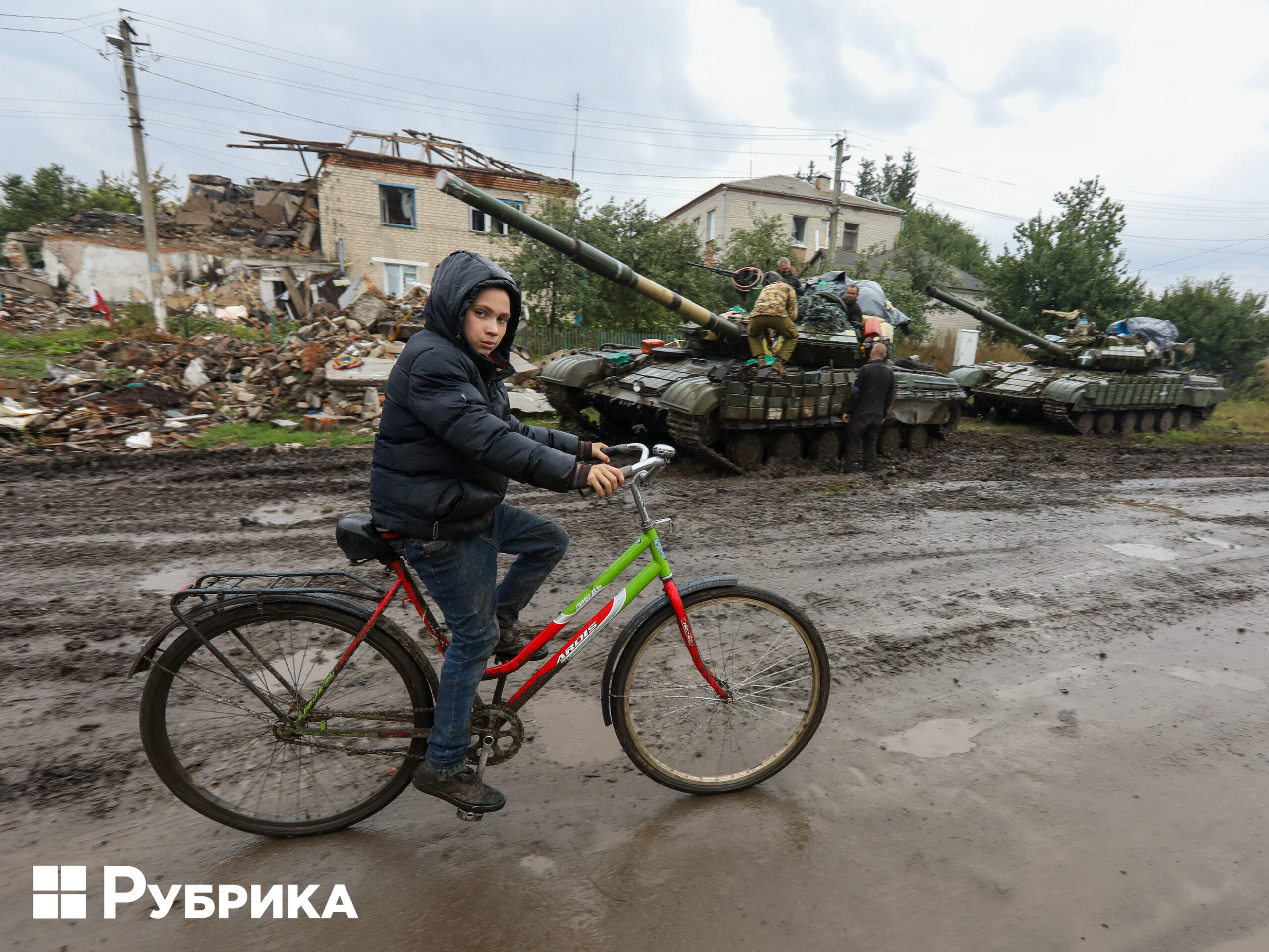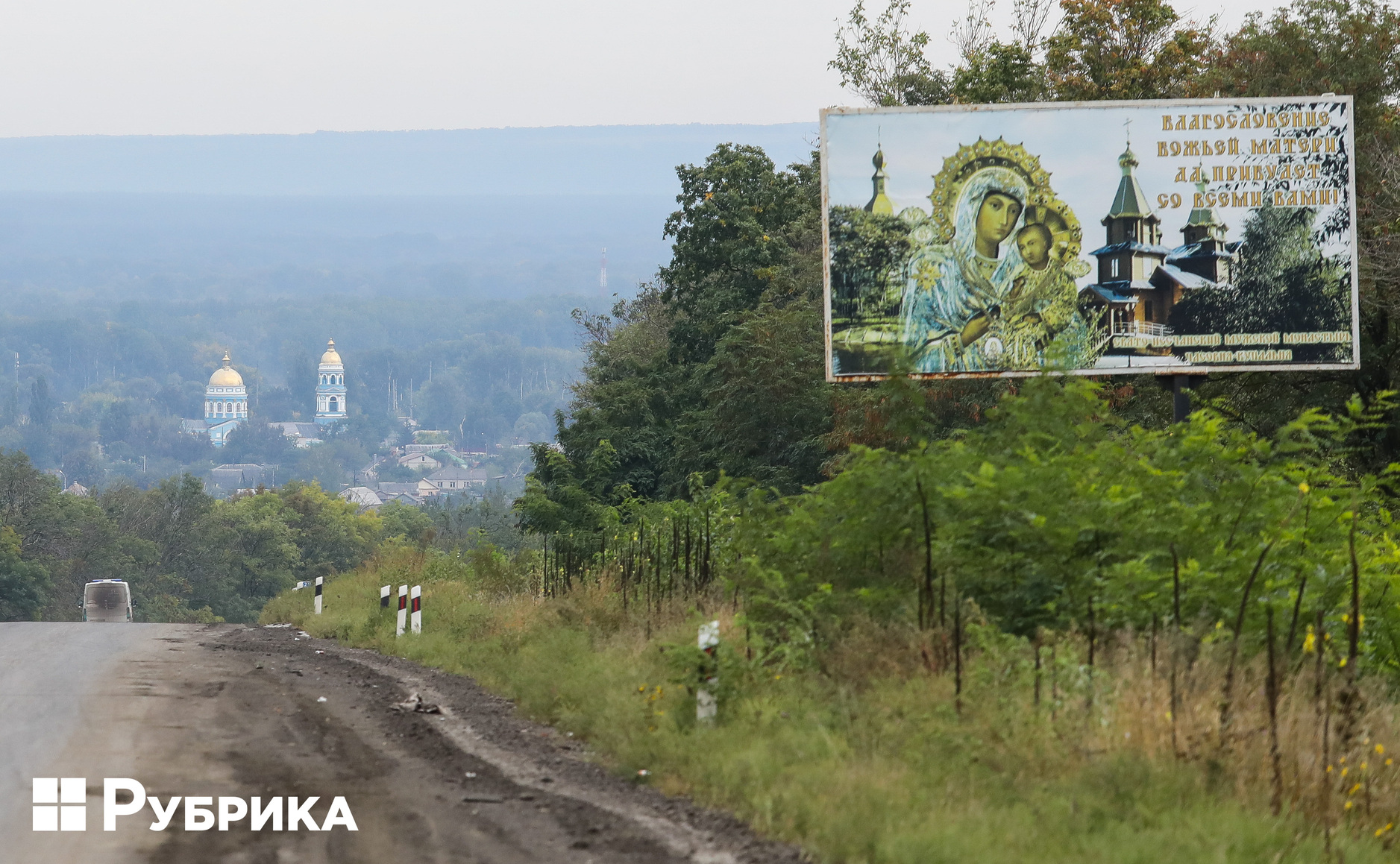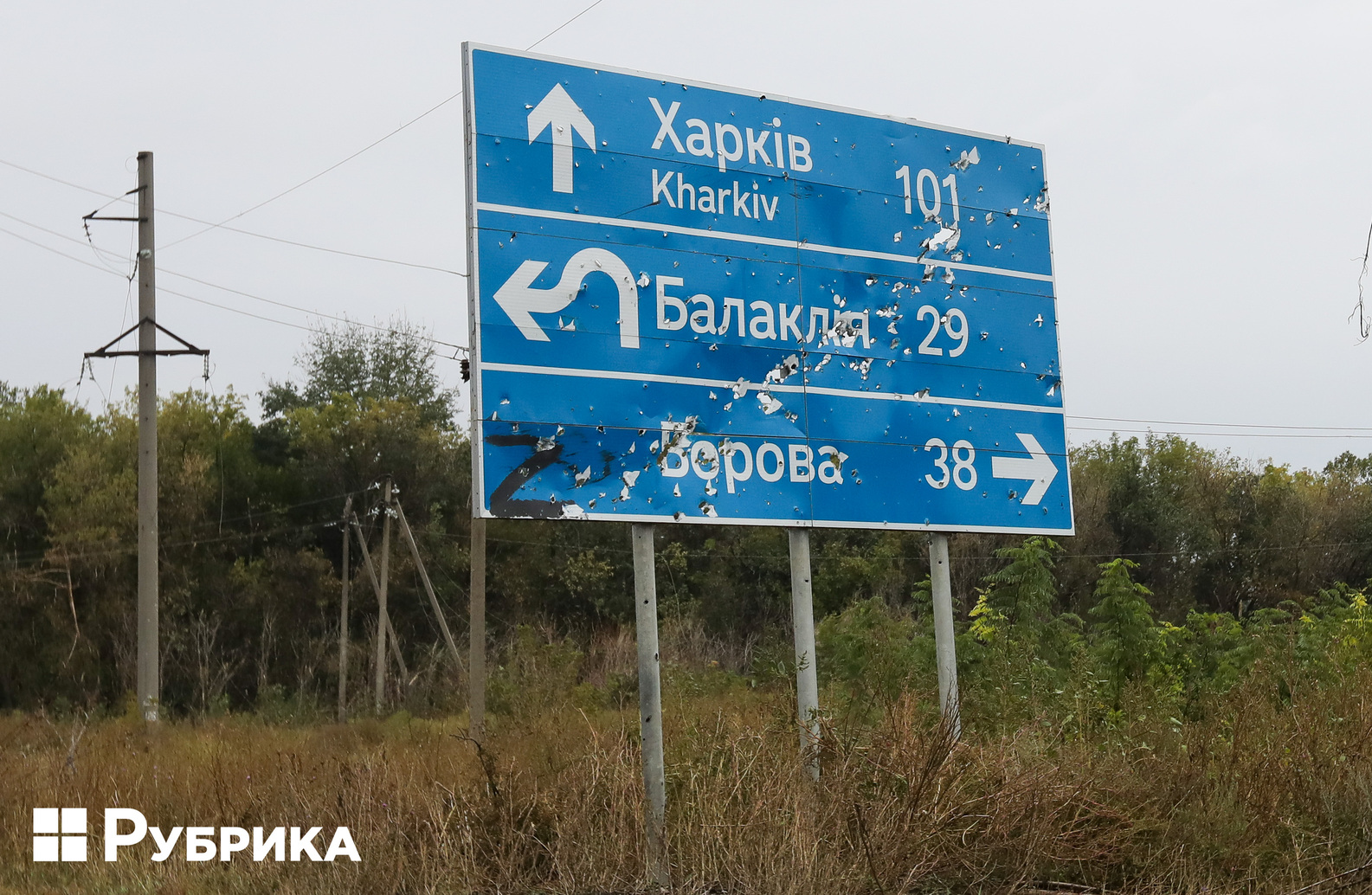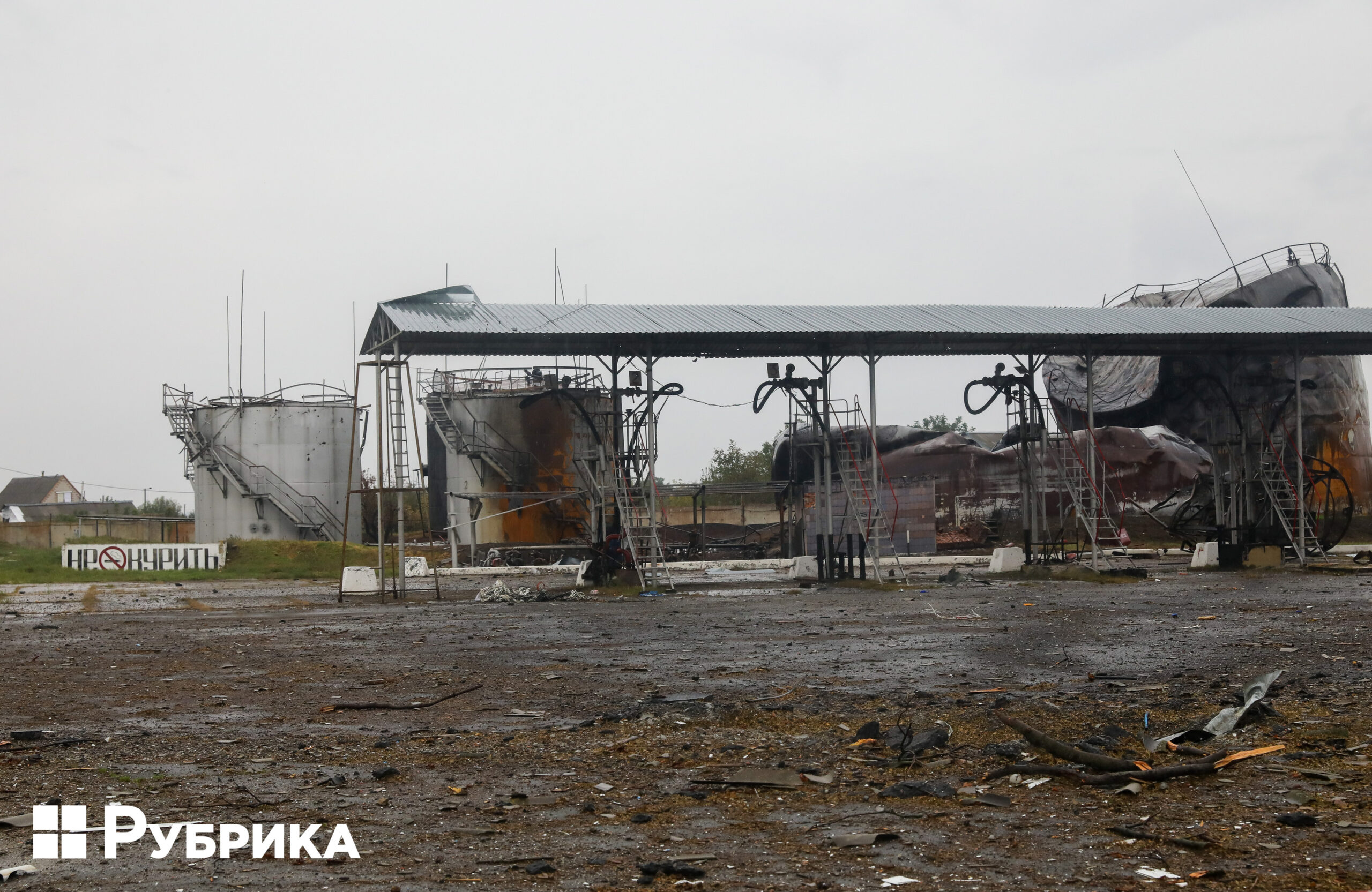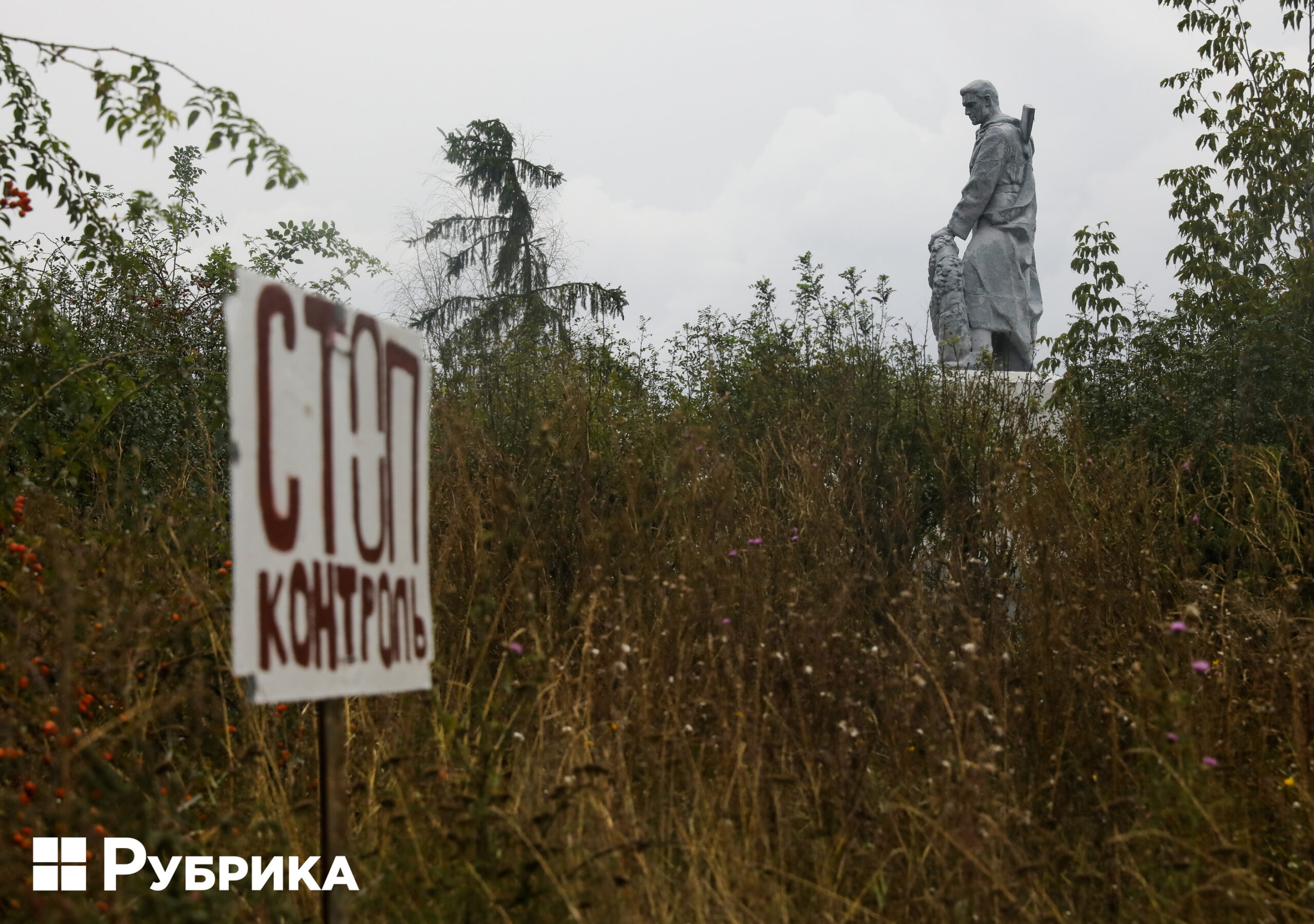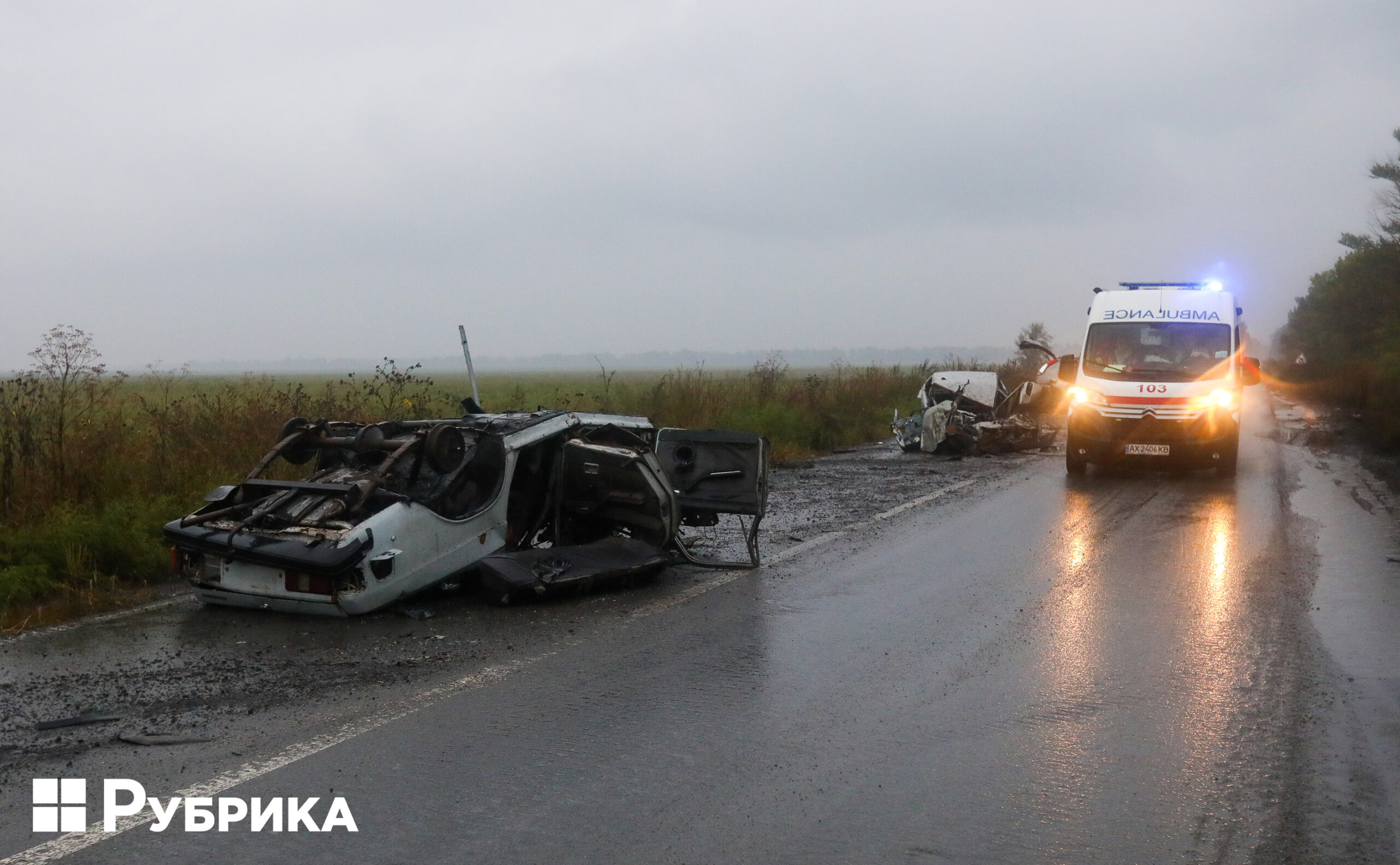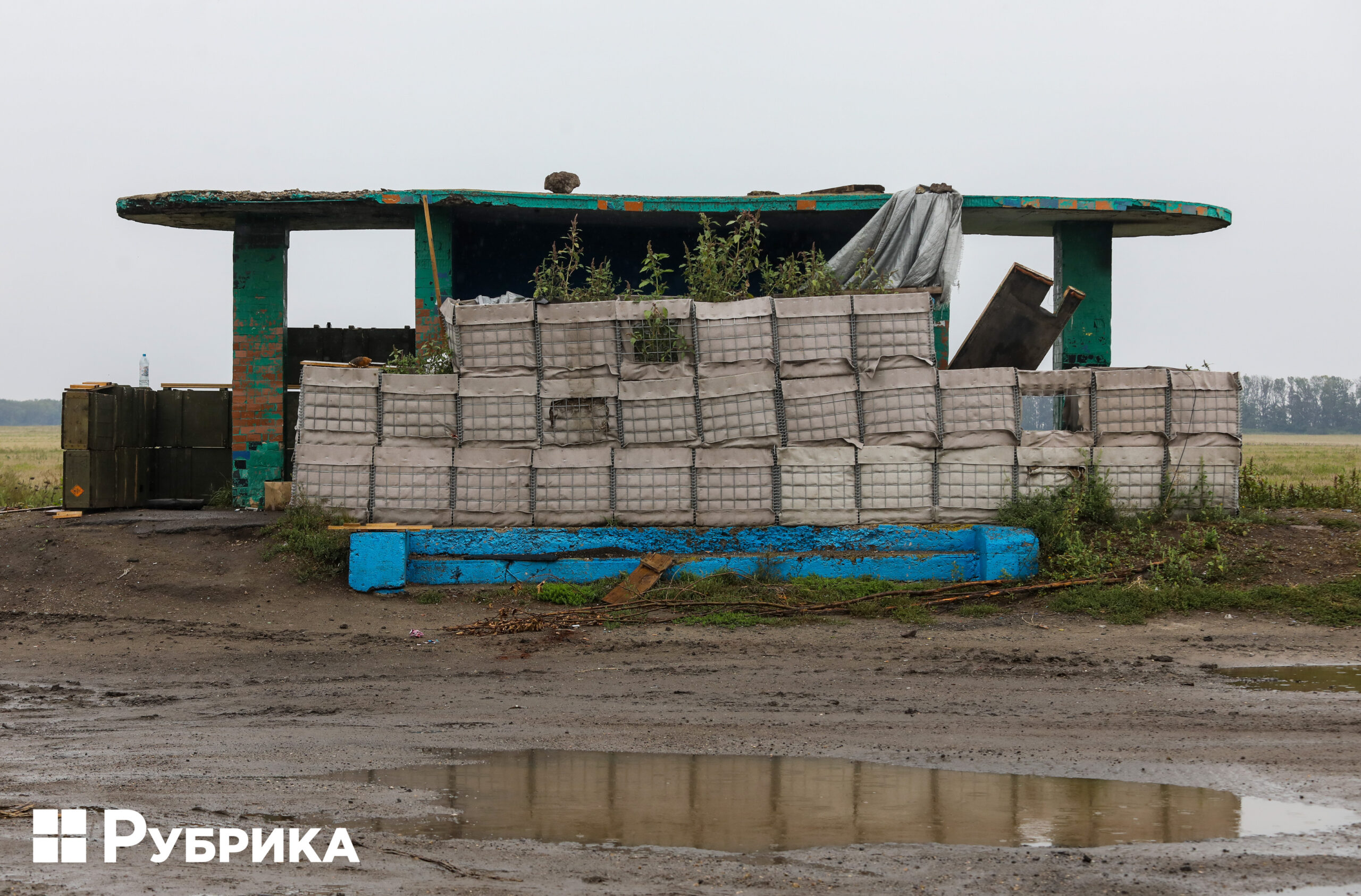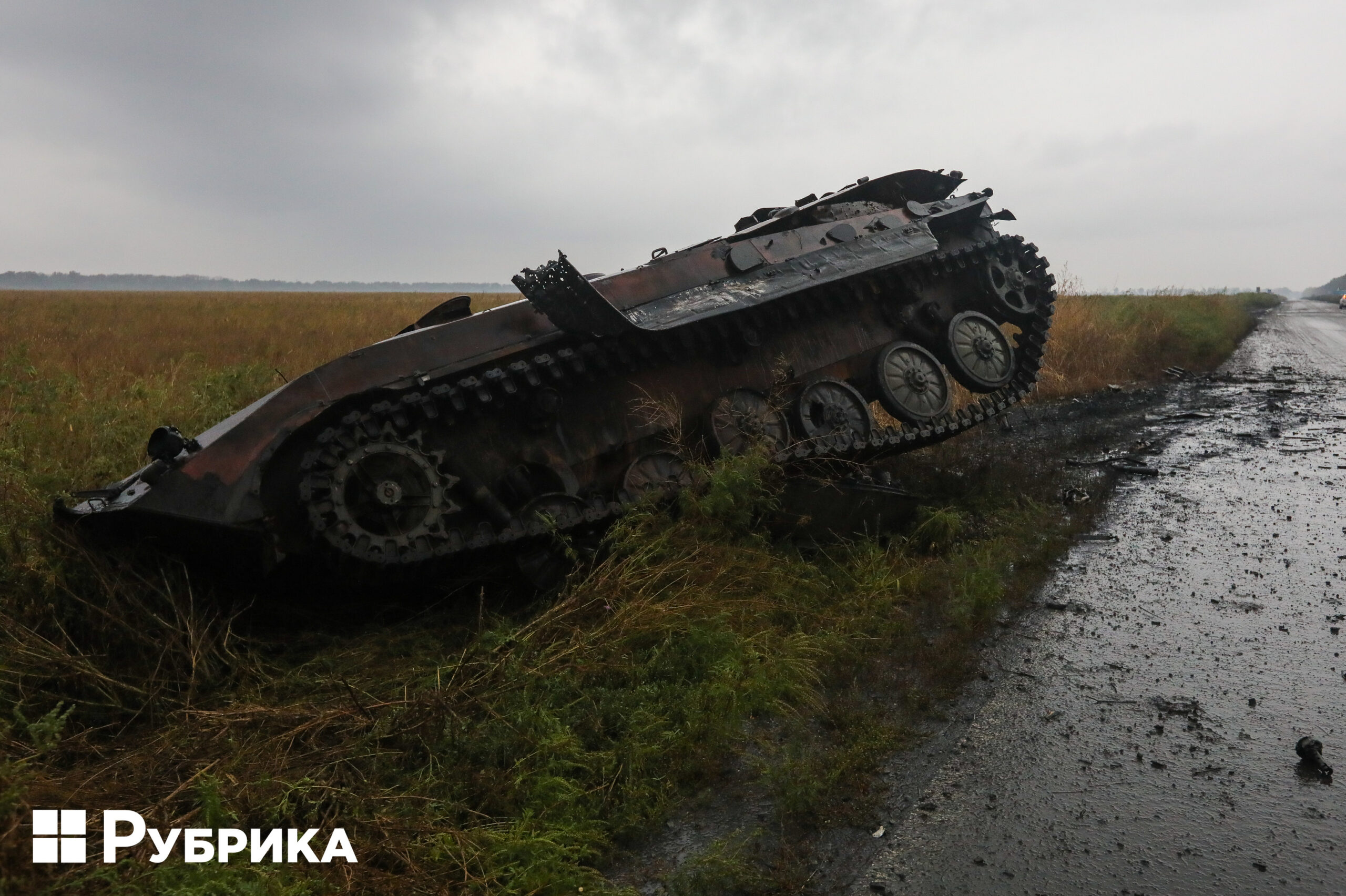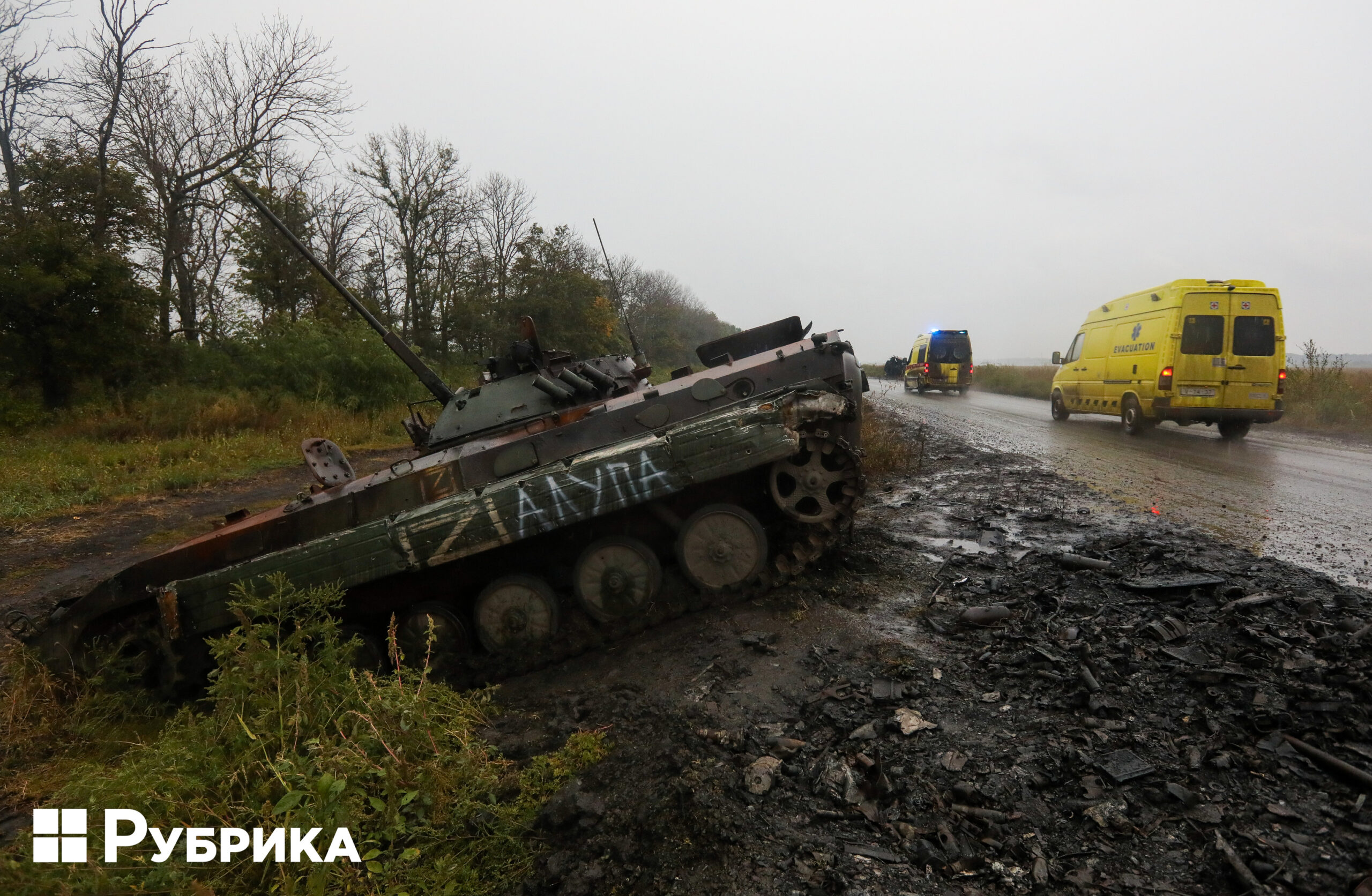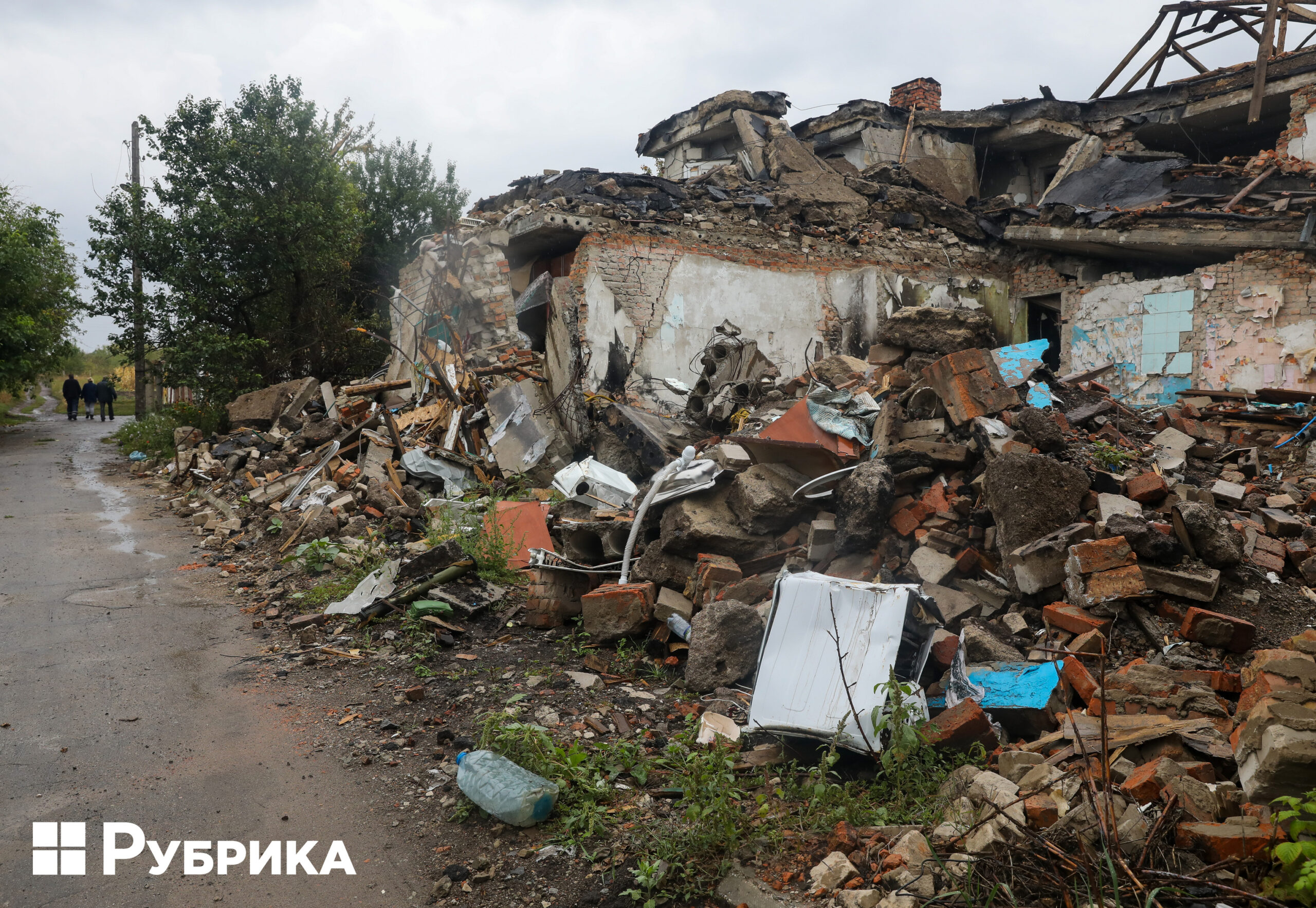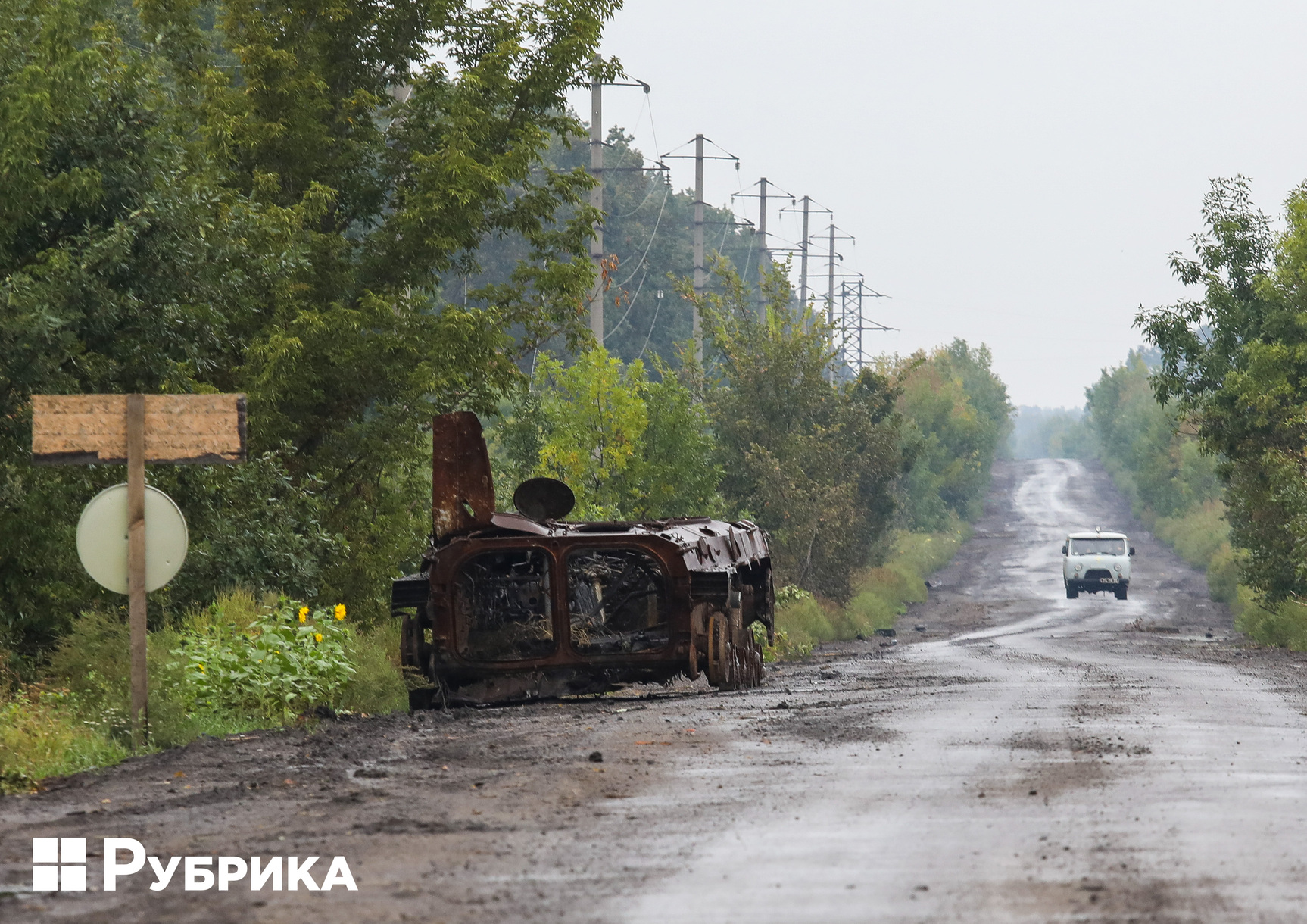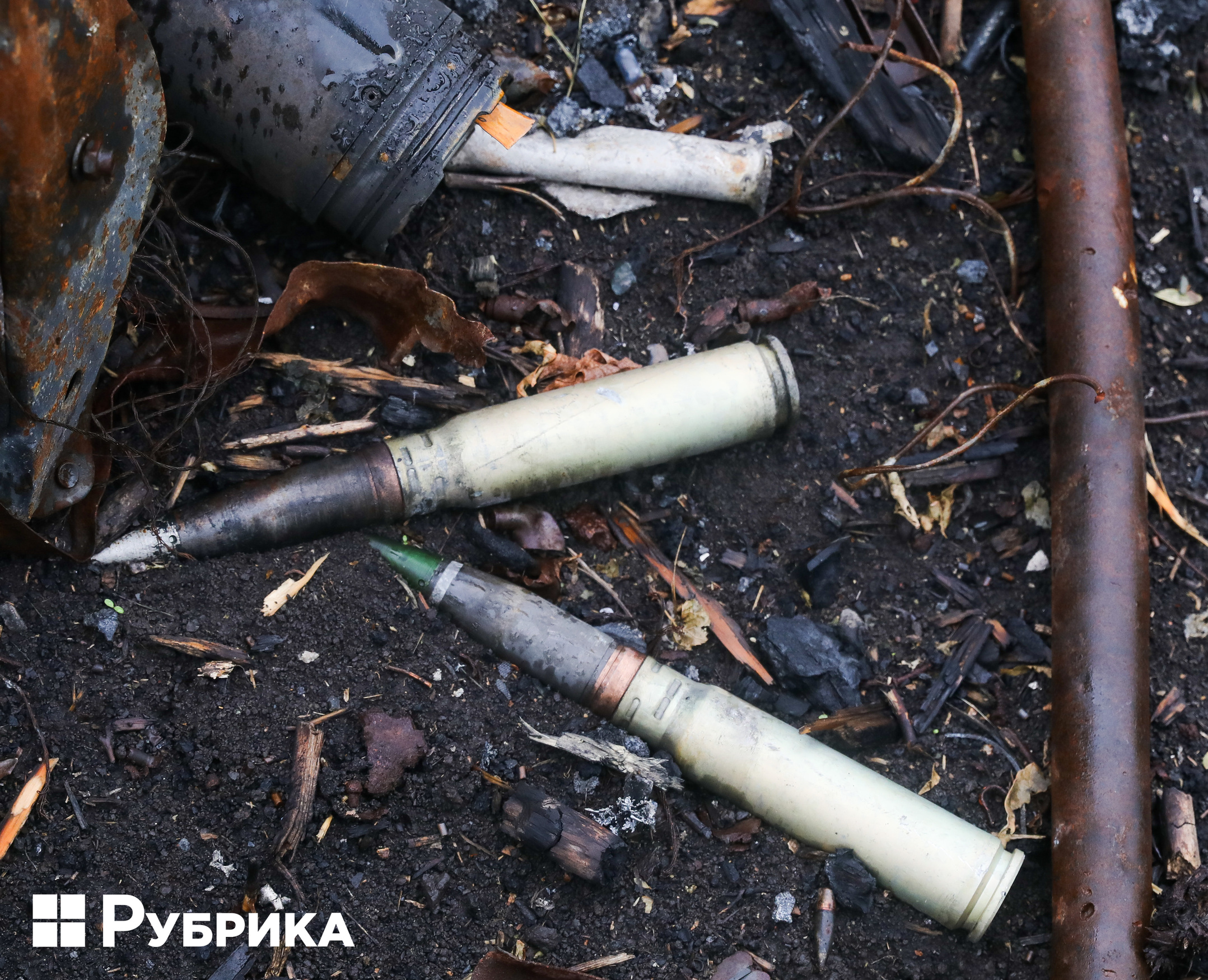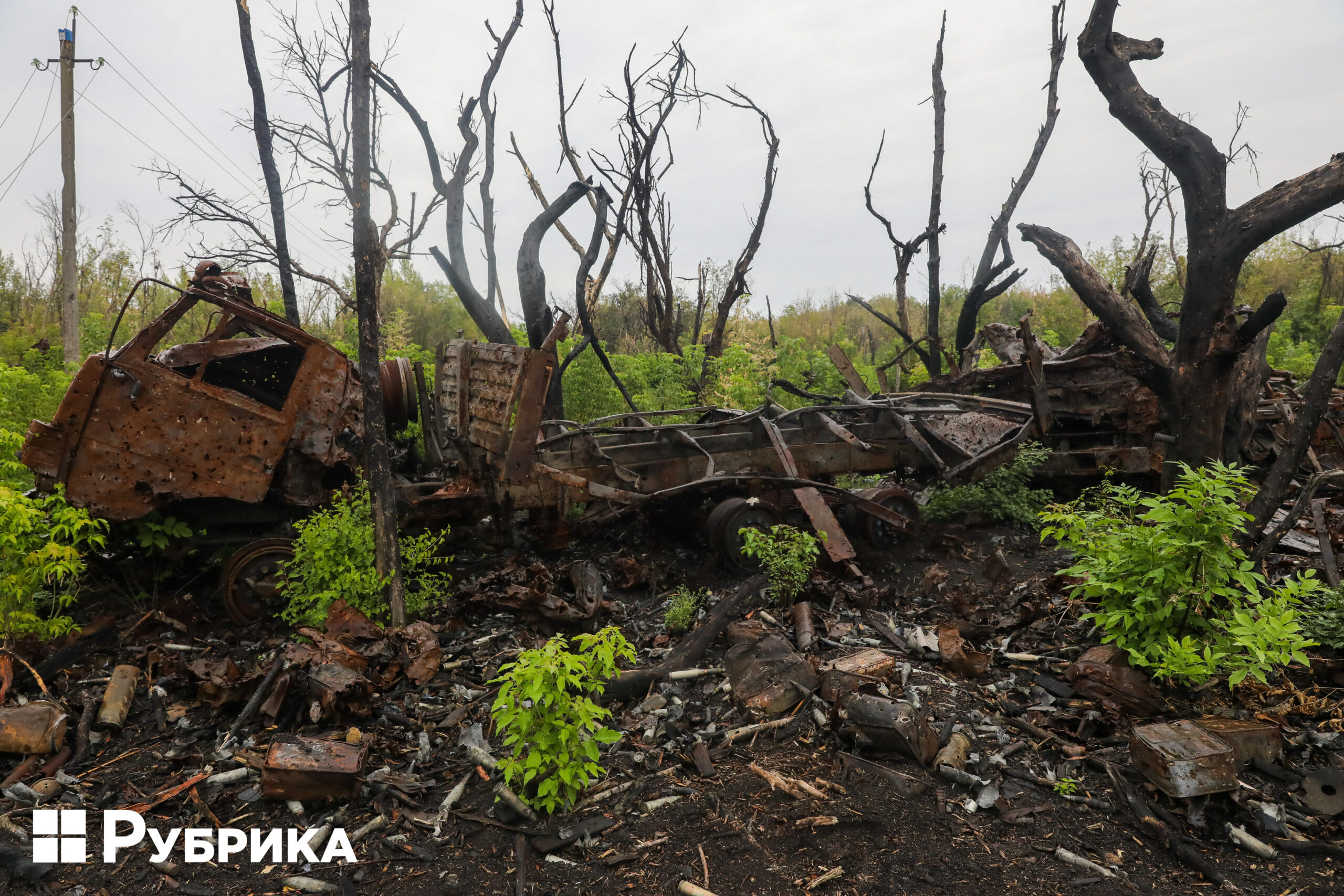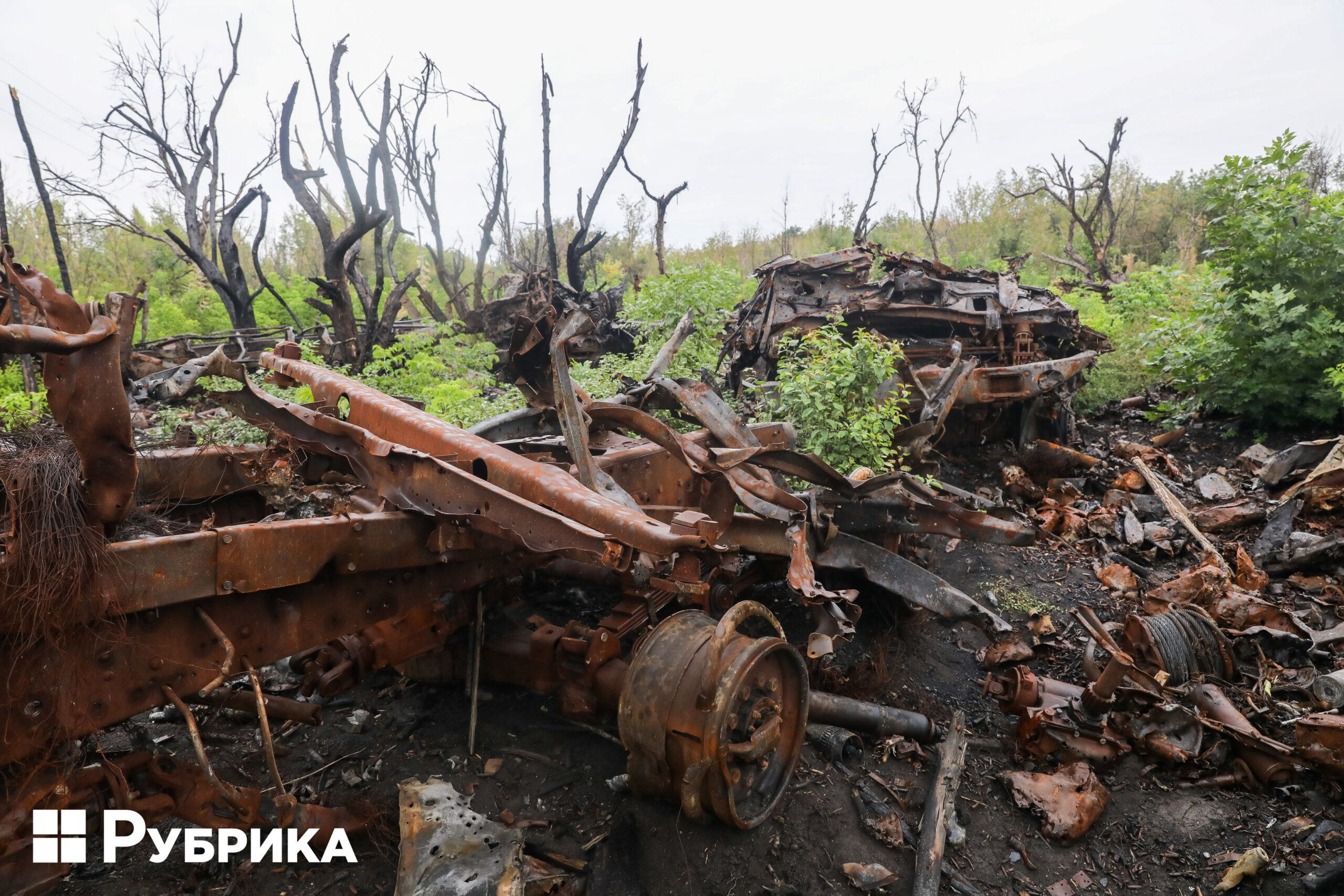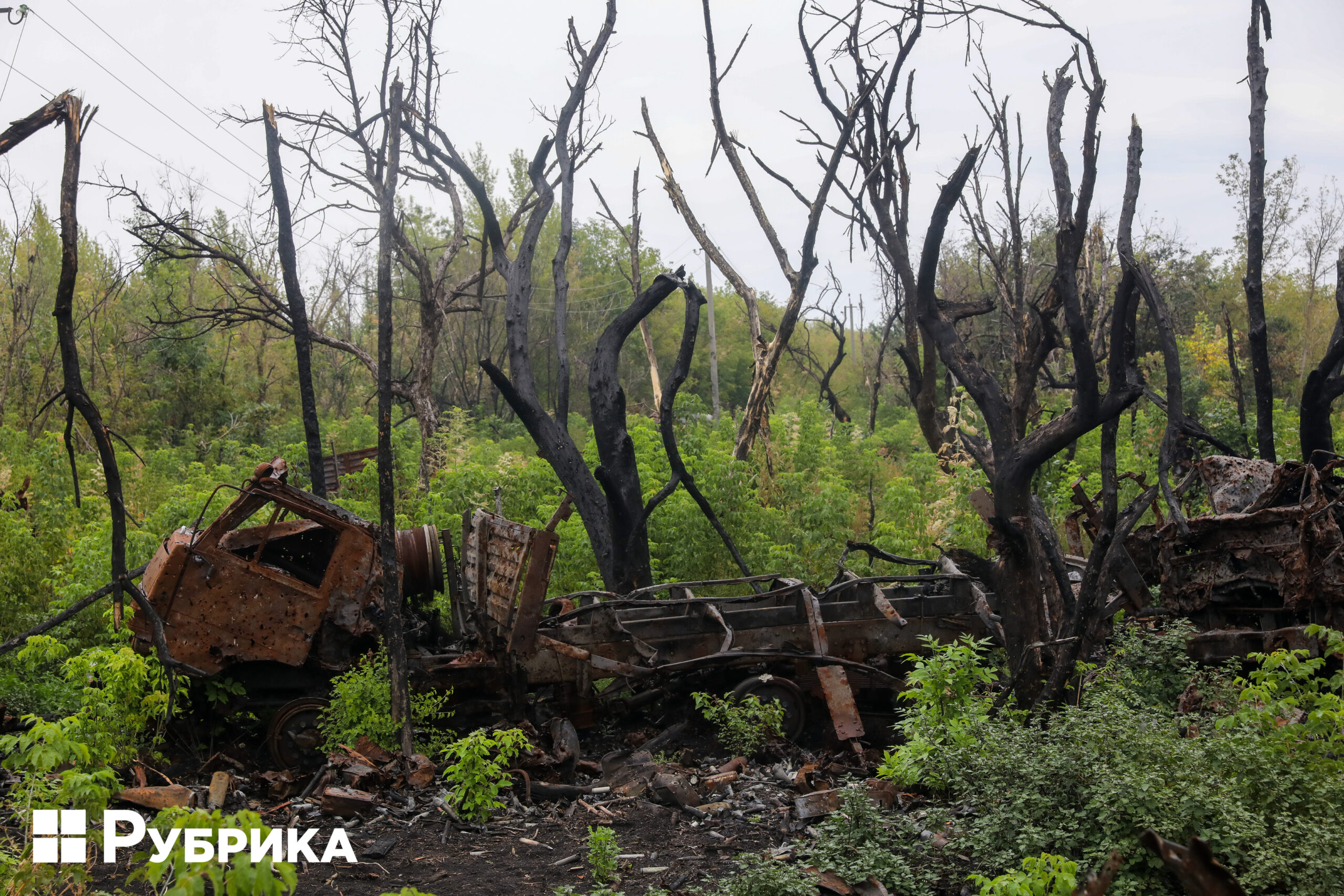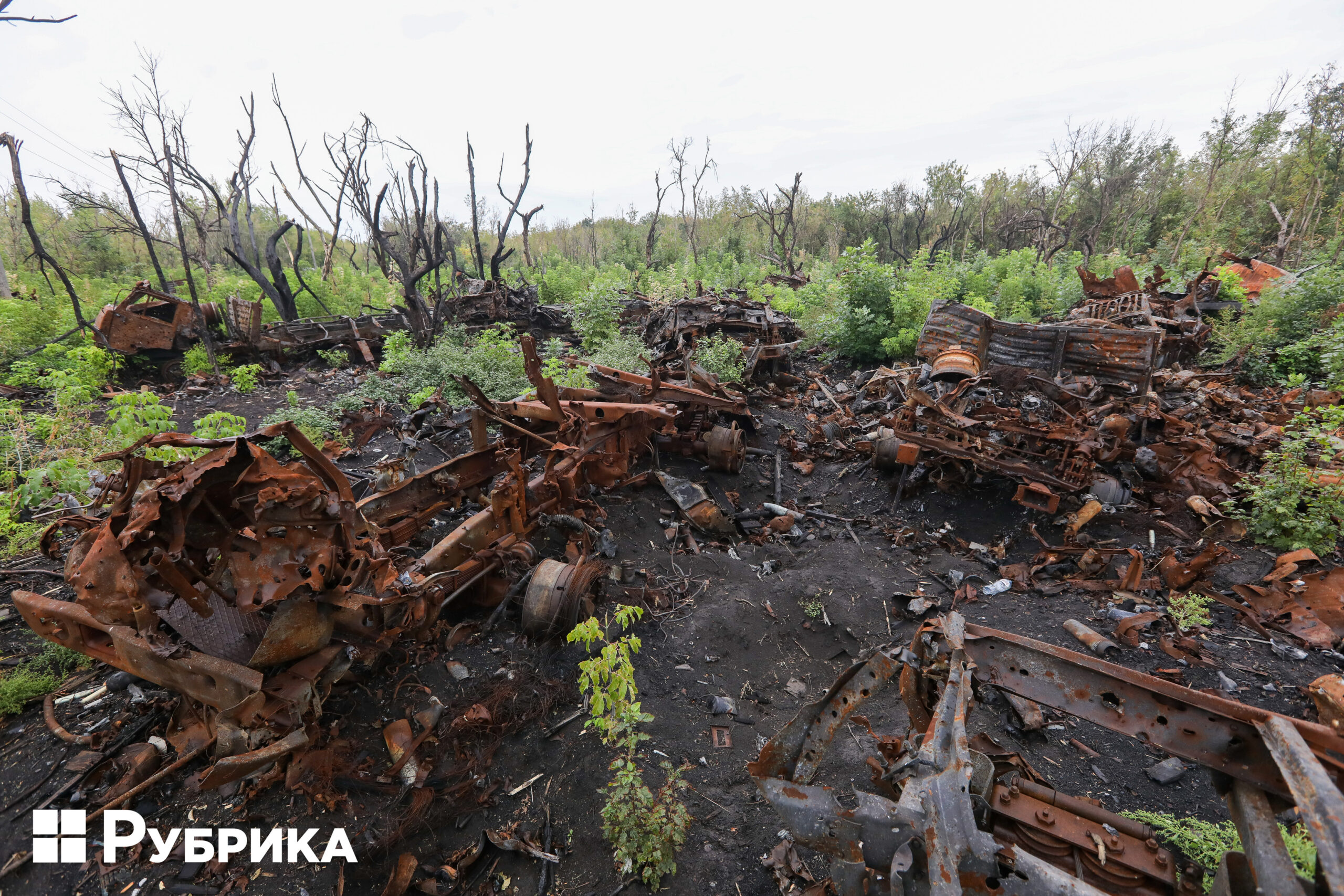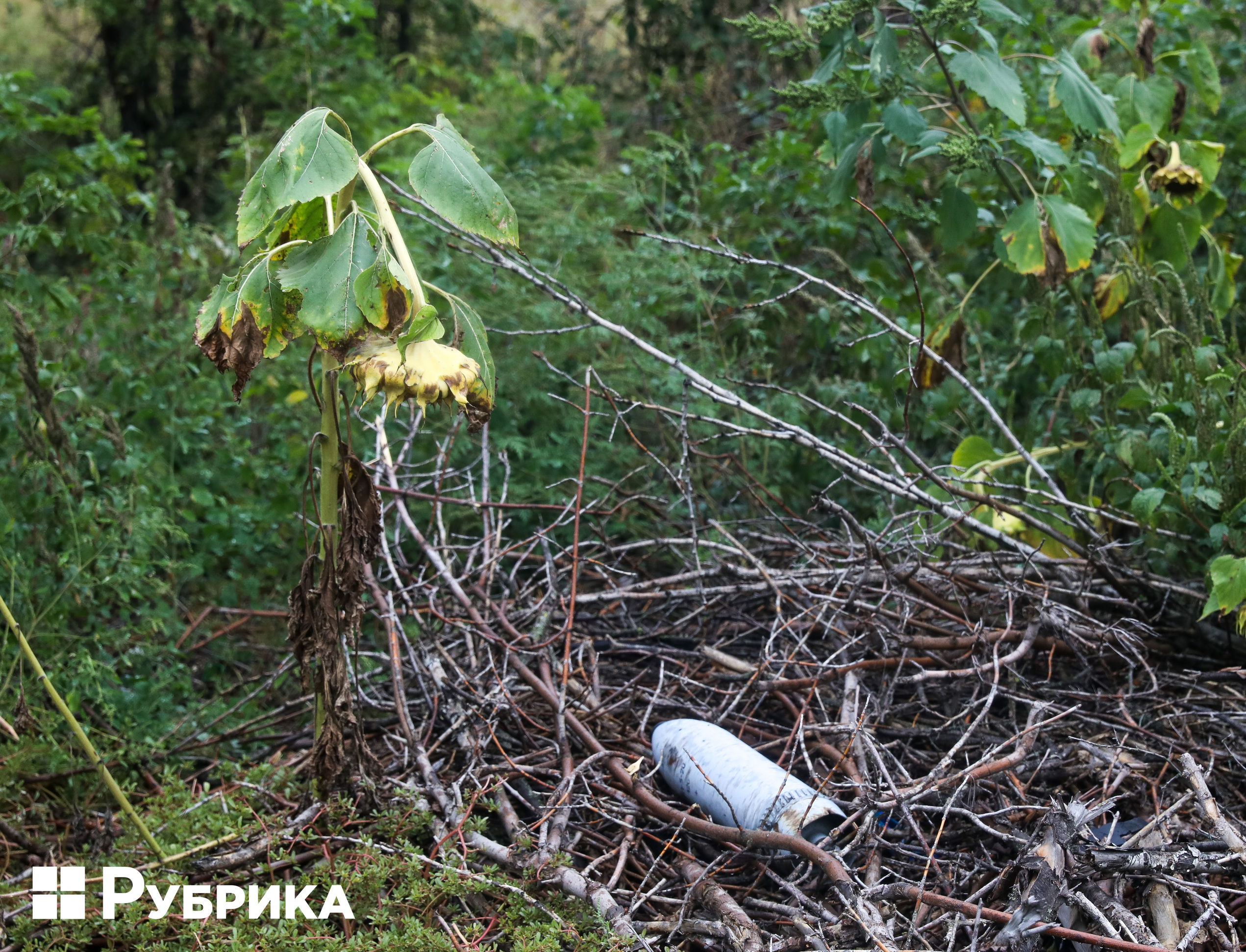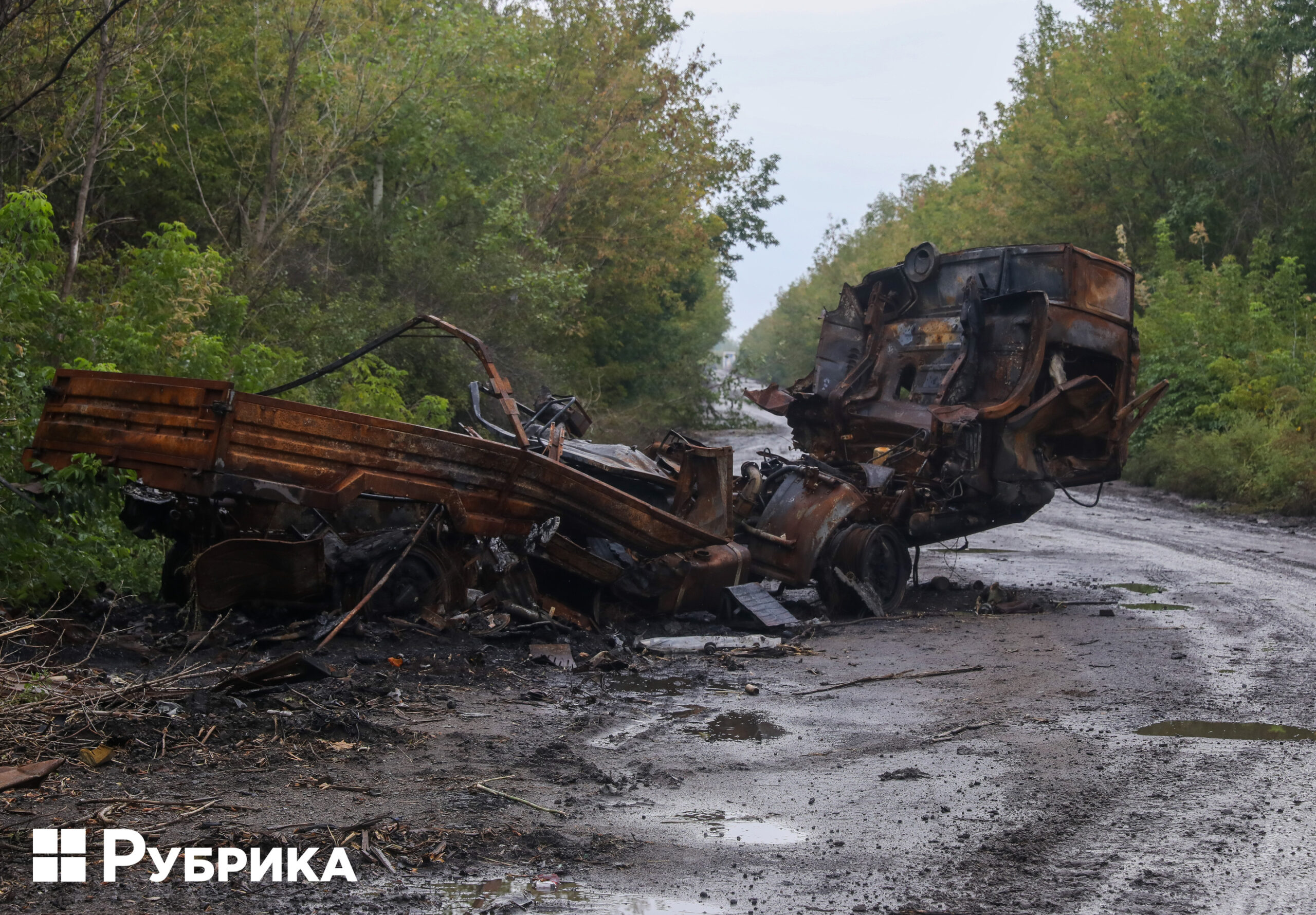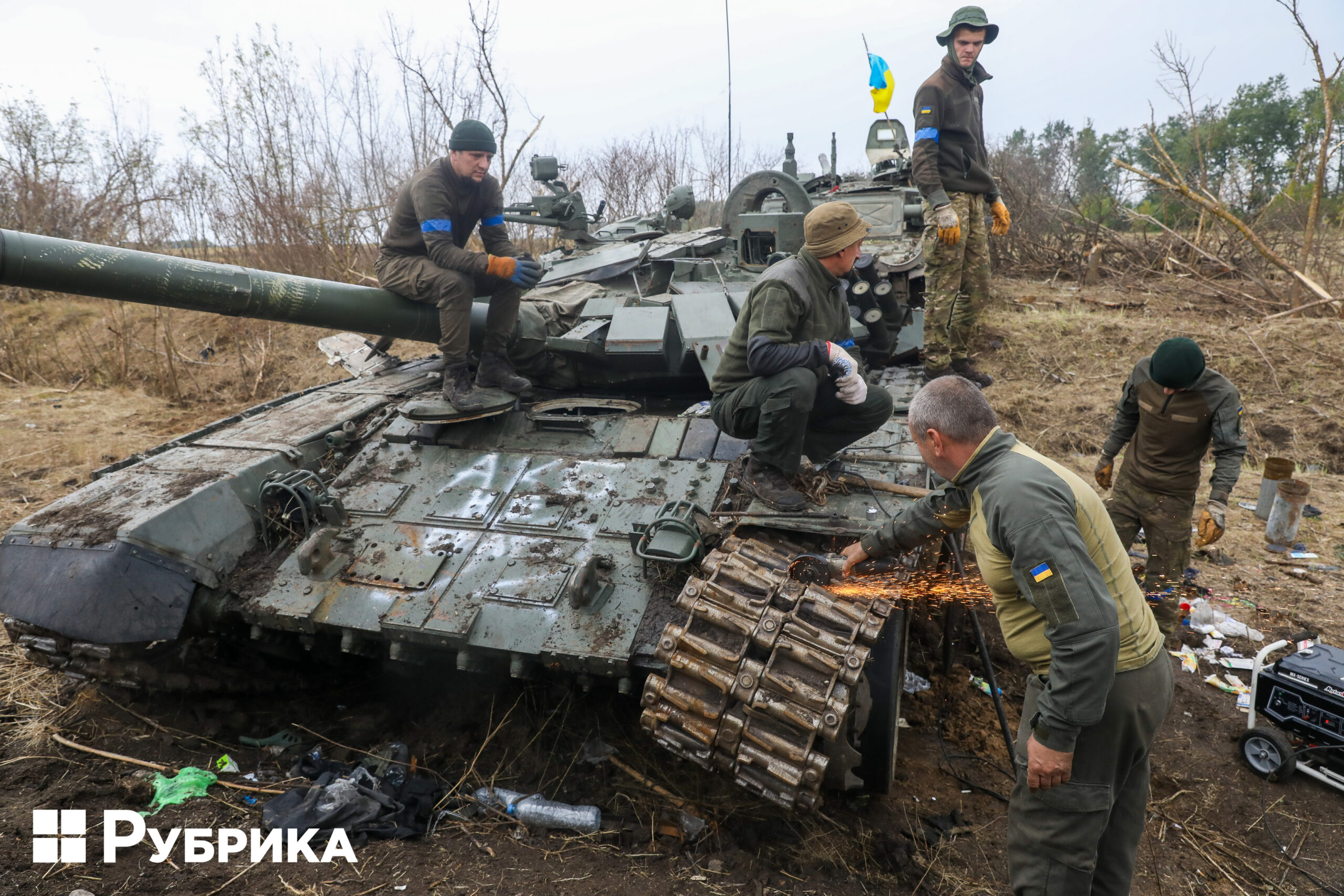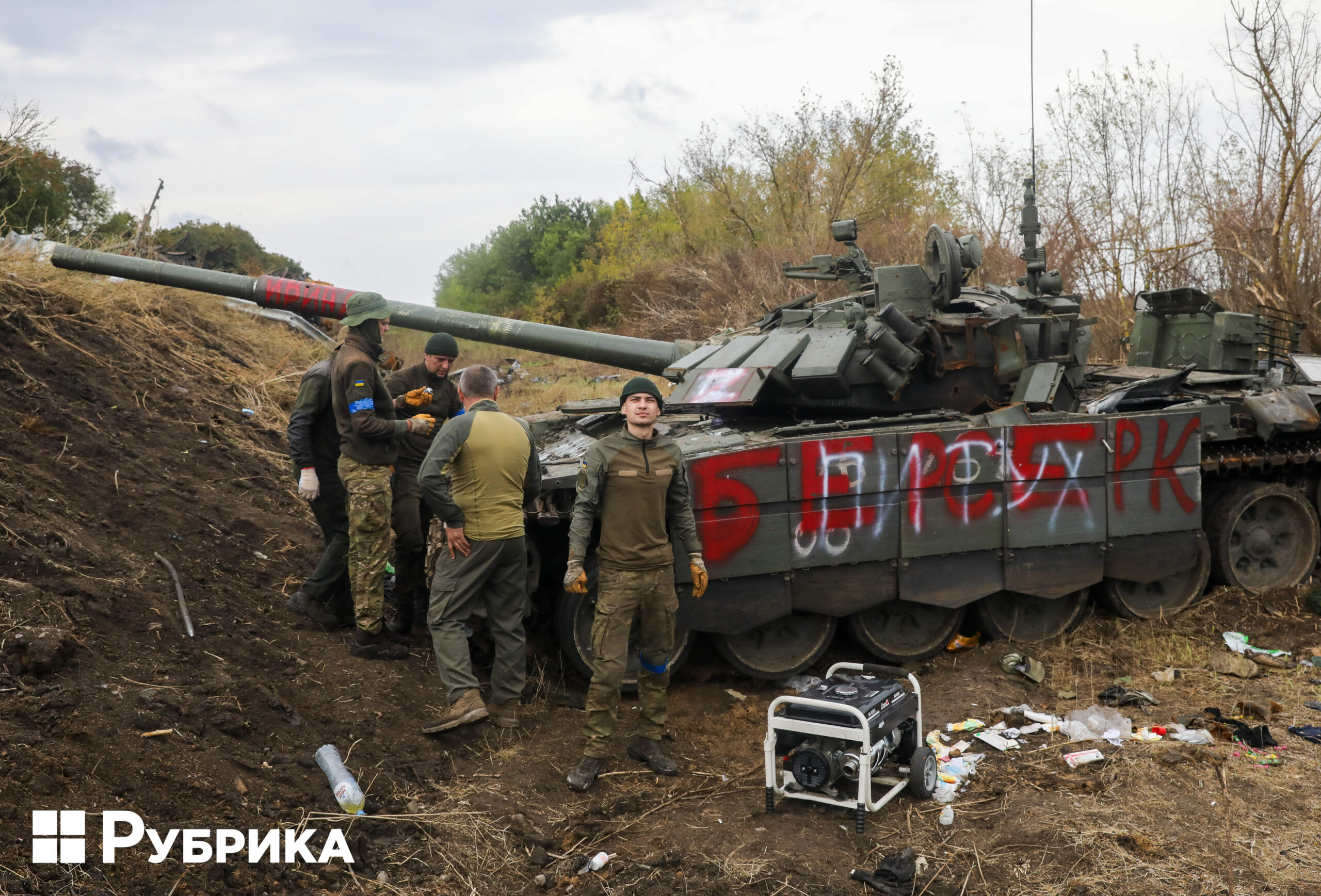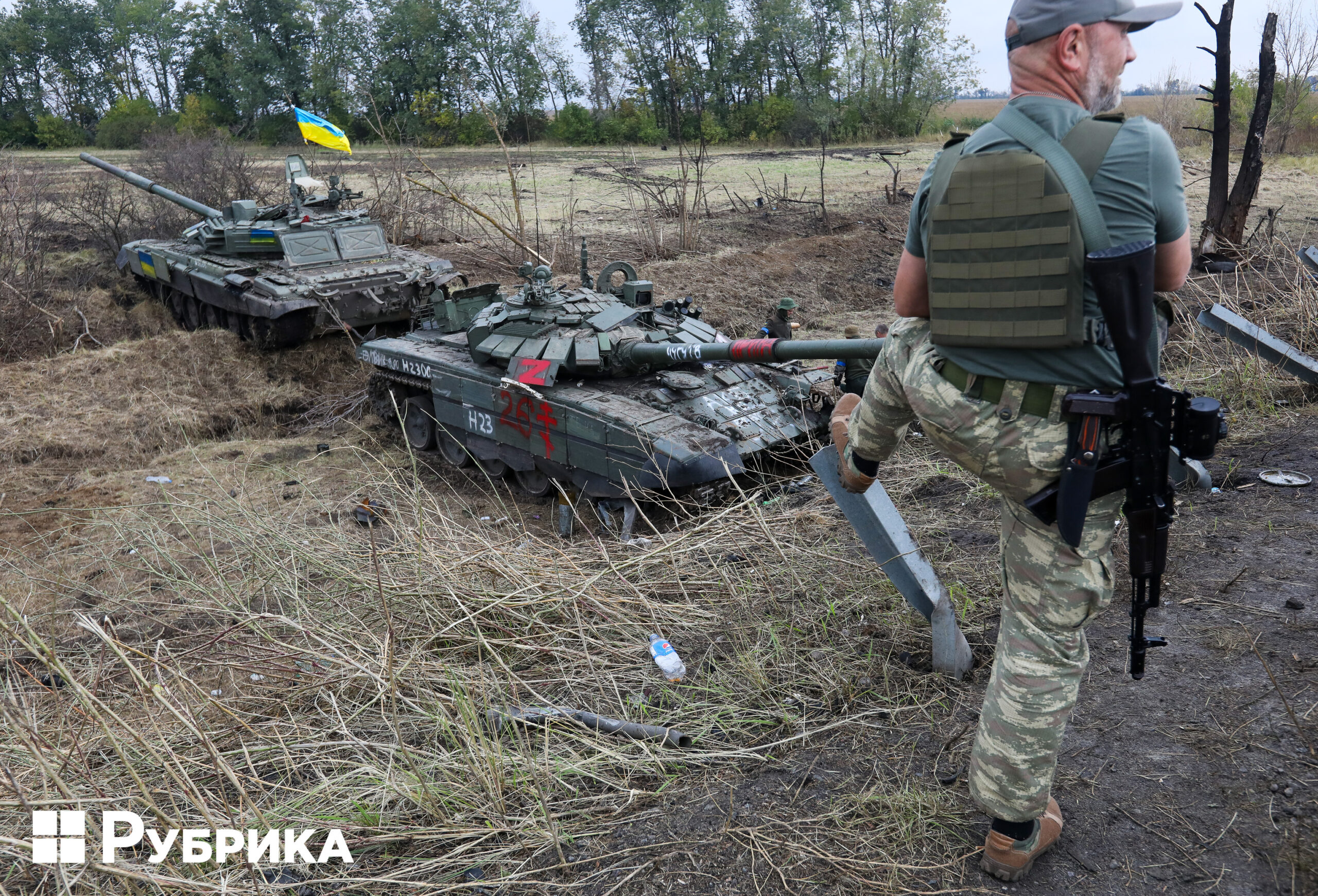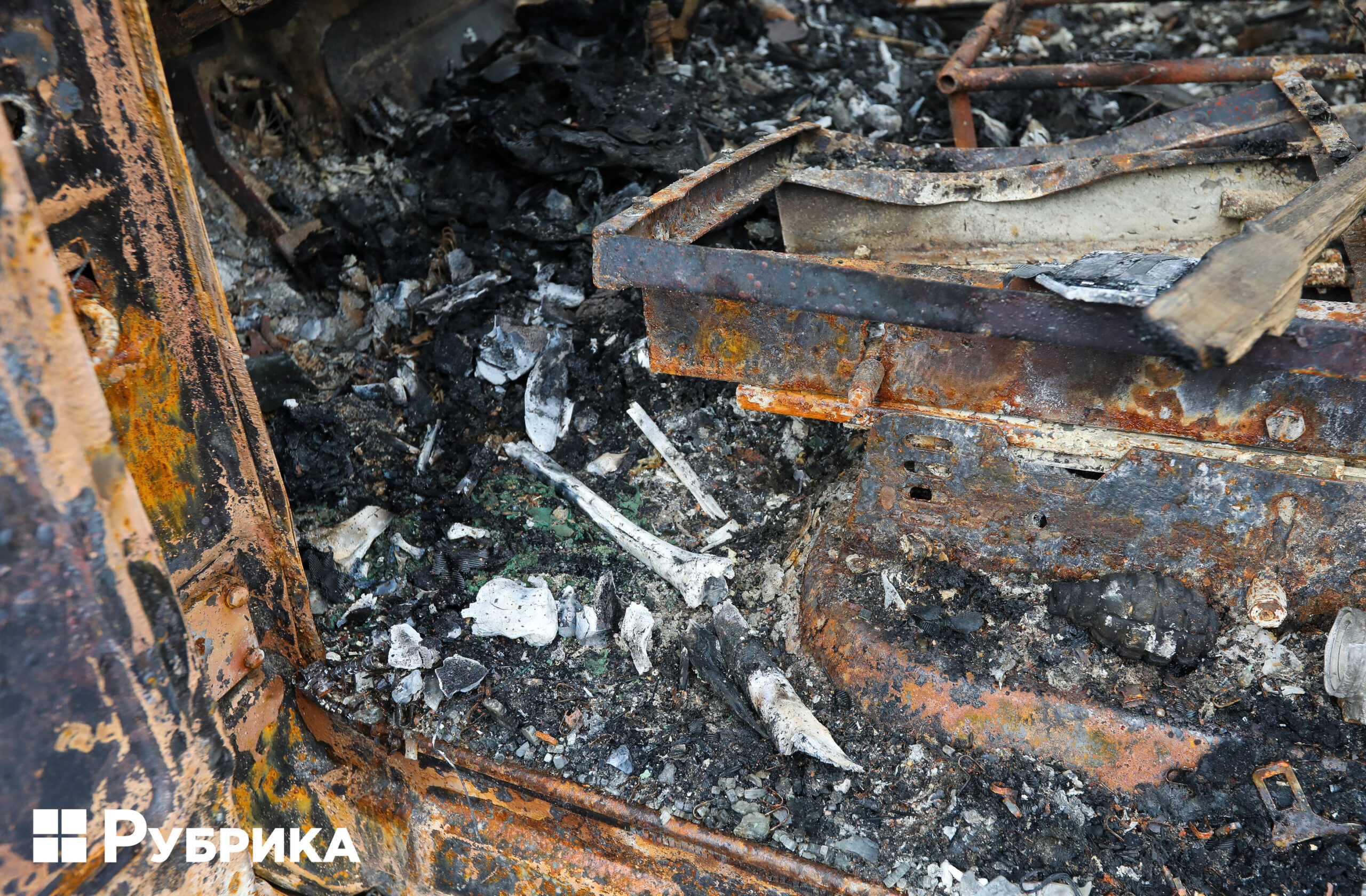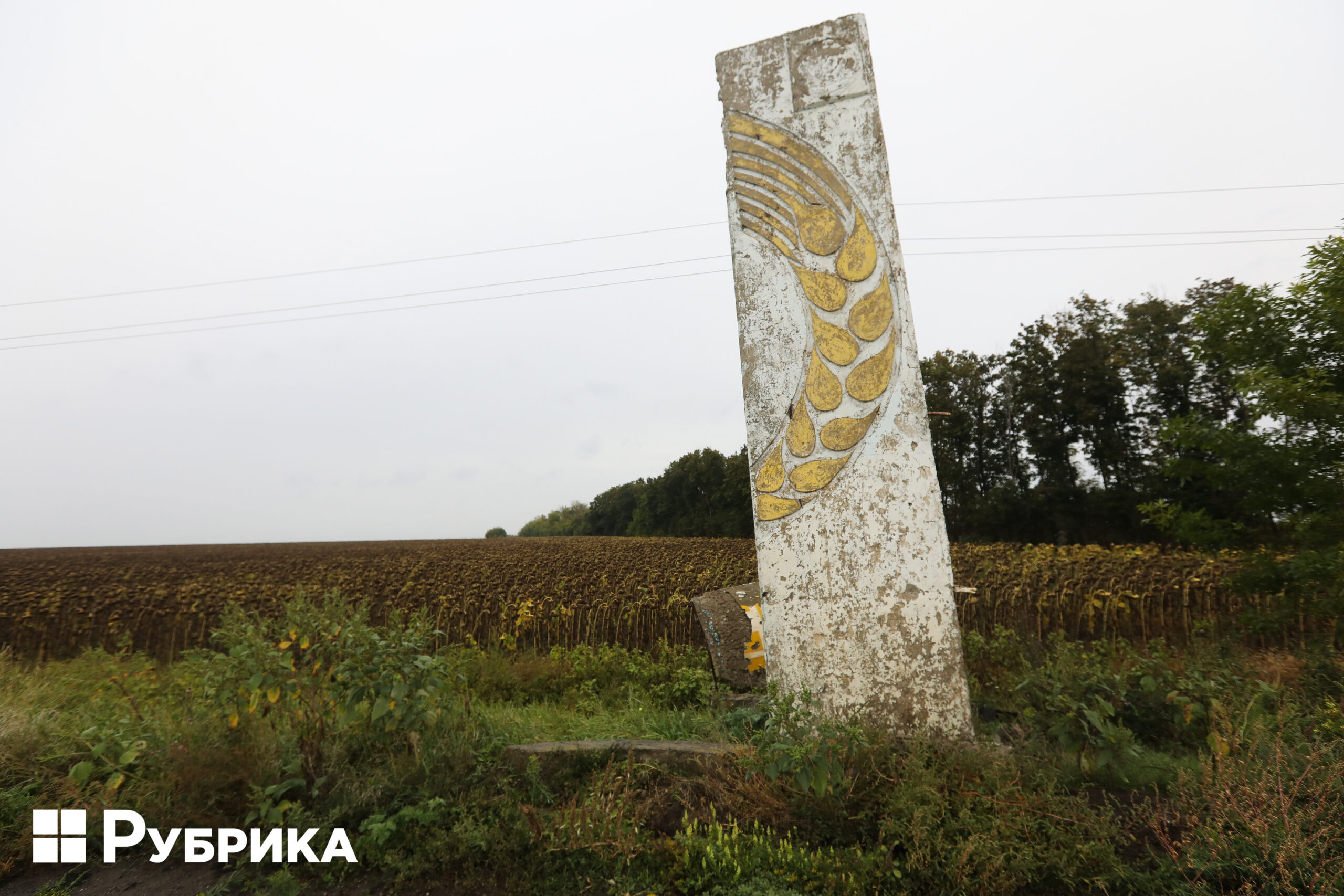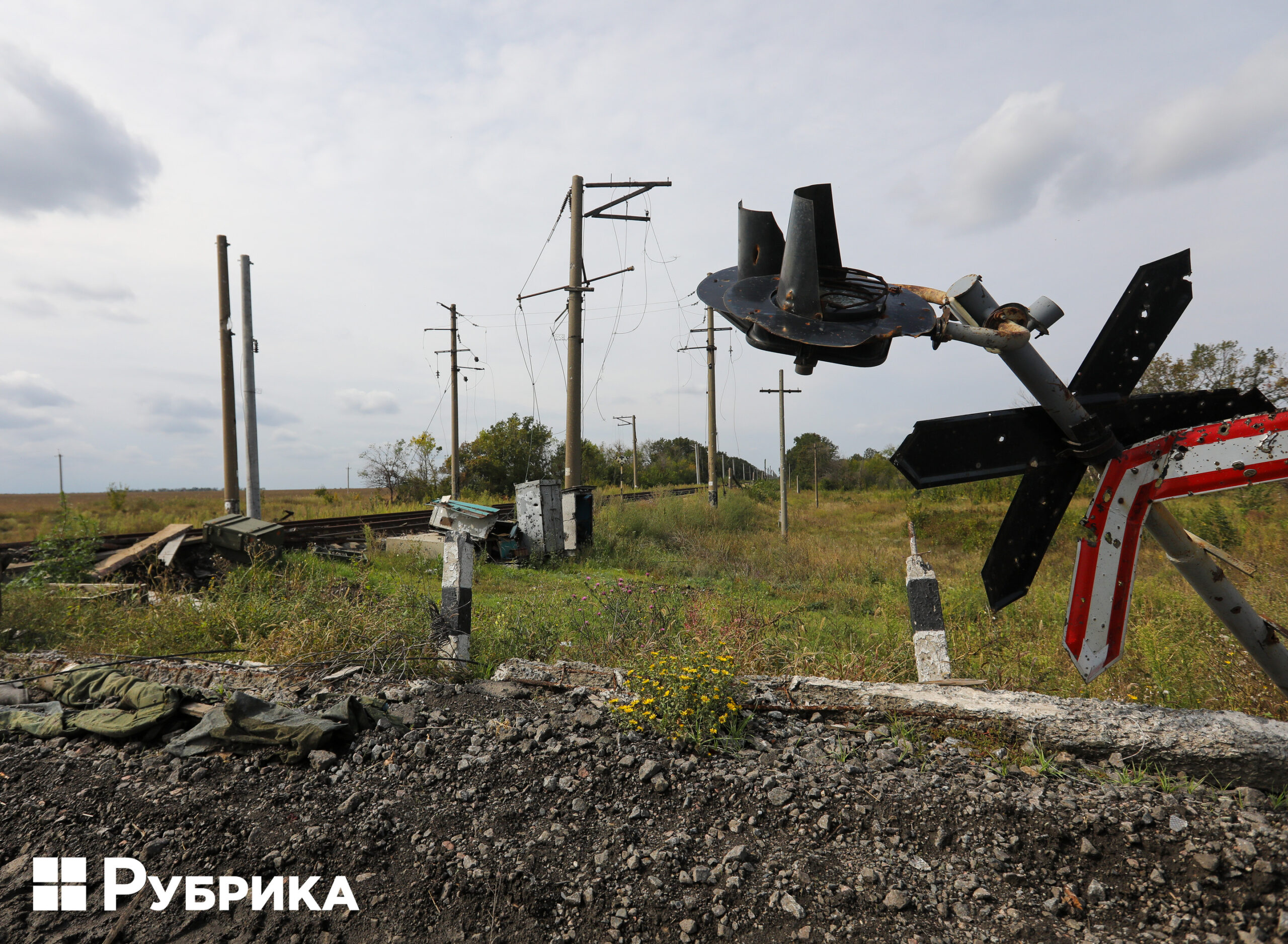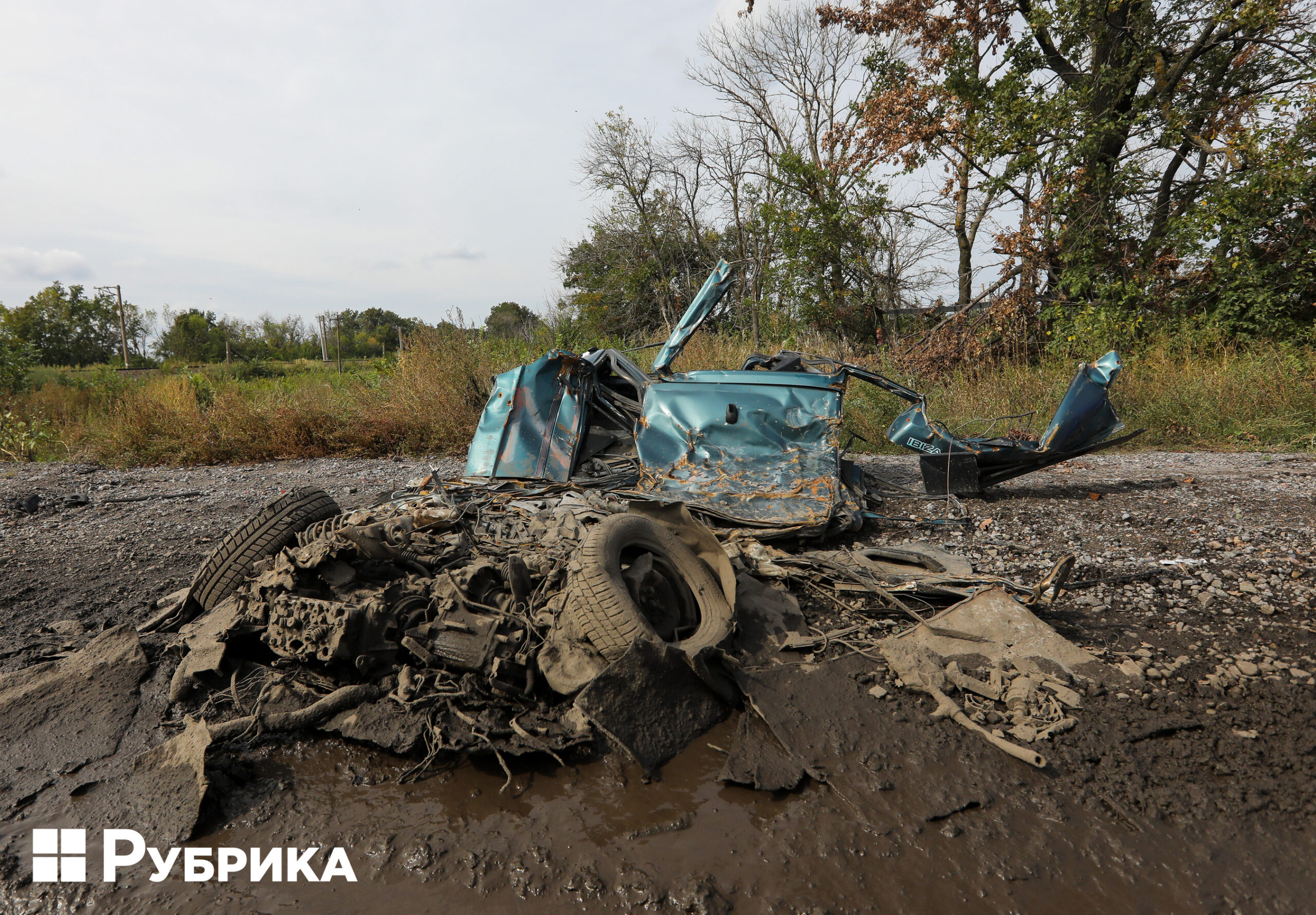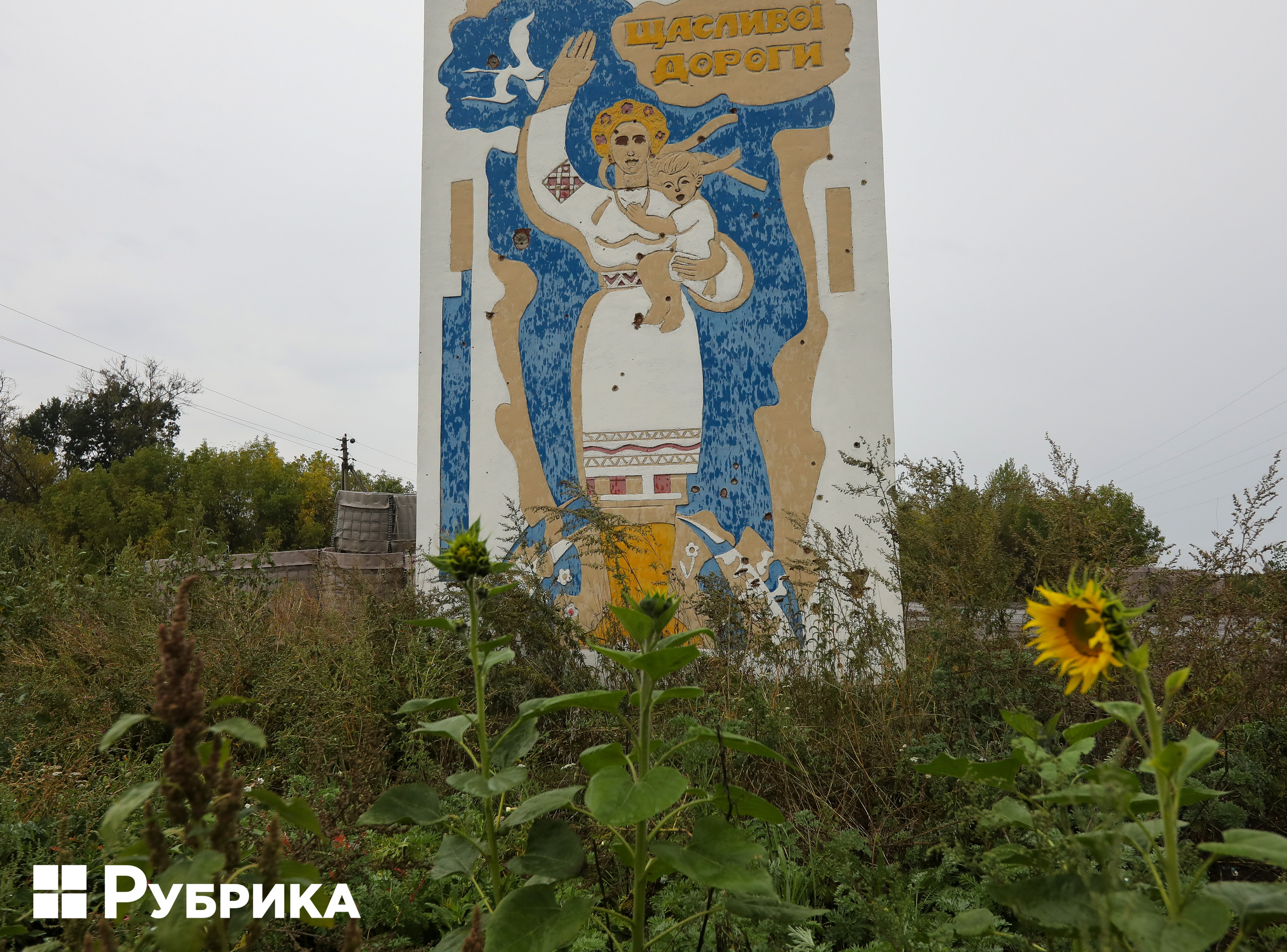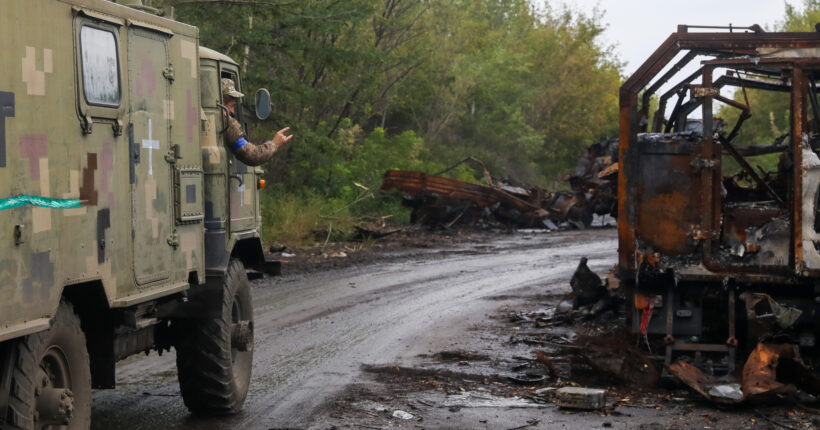
Photo: Rubryka
An hour before the curfew begins, Kharkiv is gloomy, plunged into darkness: there are no street lights, it's raining in the city, and cafes and shops are closed. The windows in residential buildings are also mostly dark; some people keep masking the light, and some have left the city, shelled by the russians almost every day. When Rubryka finds itself in a city, an air raid sounds.
Road to de-occupation
We arrived in Kharkiv to go to the recently de-occupied territories of the region the next day. We leave in the morning and drive through the city full of sun but empty. Behind is the road cut by craters from shells and mines.
There is no mobile service here. Sometimes you come across broken military equipment and maimed cars on the roadside, although the regional authorities clean everything up quite quickly.
We are witnessing such "clean-up" with two tanks on the roadside—the enemy's one and ours. Ours is in the role of a tractor, pulling a battered russian tank from the side of the road. A bottomless pit on the road nearby: the enemy tank was thrown back by an explosion.
The military has already removed almost all the russian tankers' bodies, which were scattered around by the blast wave. However, one of them, a Dagestani, is still lying in a ditch.
One of our soldiers shows the military ID of another russian named Beslan found nearby. The name reminds us of the tragedy in the russian school, when the russian authorities, together with the terrorists, destroyed hundreds of children. Now russia is trying to wipe out the Ukrainians, but in fact, it is destroying itself.
Nearby, quite by chance, we notice a lot of destroyed equipment behind the bushes and trees, mainly Kamaz vehicles, where russians likely stored ammunition and material support. It is difficult to count how many there are, and it's dangerous to go deep, but we see dozens of trucks that have burned to the ground.
Near one of the cars, we see a plate with the russian regional number 50. These cars came from Buryatia and will never return as well as the soldiers in them.
Let's go further. Many fields around have an unharvested crop of sunflowers and damaged road infrastructure. The letters Z are always hastily drawn at stops and road signs.
The roads between the villages are in terrible condition. But fortunately, many towns that we came across survived; they have almost no destroyed houses. We can't see the people.
Along the roads, here and there, there is broken equipment. But soon, it will be removed. Ukrainians and the world were impressed by the speed of the Ukrainian army's counteroffensive. The utility workers are not lagging.
Further, there are new cities, de-occupied communities, and villages. Read future reports on Rubryka.
See more photos in the slide:



